The Origin of the Number Zero
Deep in the jungle, an intrepid scholar locates a symbol of power and mystery
/https://tf-cmsv2-smithsonianmag-media.s3.amazonaws.com/filer/d9/33/d9338ecd-6597-4cd9-bb3d-8cf26e7999ce/mark-zero-phenom.jpg)
Four miles from the great temple of Angkor Wat, deep in the Cambodian jungle, I opened the door of a makeshift shed with a corrugated tin roof and walked into a dusty room painted in pale gray. Thousands of chunks and slabs of stone covered the dirt floor: smashed heads of statues of Khmer kings and Hindu gods, broken lintels and door frames from abandoned temples, the remains of steles with ancient writing. After years of searching, I’d finally arrived here, hoping to find a single dot chiseled into a reddish stone, a humble mark of incredible importance, a symbol that would become the very foundation of our number system—our first zero.
It was a lifelong love that led me to this threshold. I grew up on a cruise ship in the Mediterranean that often called at Monte Carlo, and I was drawn to the alluring numbers on roulette wheels: half of them red, half black. My fascination led to a career as a mathematician, and, dabbling in mathematical archaeology, I’ve tracked down many ancient numerals, including a magic square (those mysterious numerical grids in which the sum of every column, row and diagonal is the same) on the doorway of a tenth-century Jain temple at Khajuraho, India.
I’m convinced that the creation of numerals to represent the abstract entities we call numbers was our greatest intellectual achievement. The simple sign “3” represents all trios in the universe; it is the quality of “being three”—distinct from “being five” or “being seven.” Numerals allow us to keep track of belongings, record dates, trade goods, calculate so precisely that we are able to fly to the moon and operate on the brain.
We use them with such ease that we take them for granted. Surprisingly, our number system took hold in the West only in the 13th century, after the Italian mathematician Leonardo of Pisa—better known as Fibonacci—introduced the numerals to Europeans. He’d learned them from Arab traders, who presumably adopted them during travels to the Indian subcontinent.
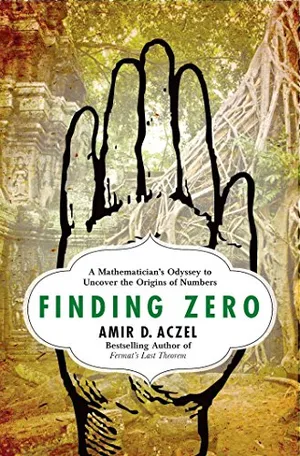

Finding Zero: A Mathematician's Odyssey to Uncover the Origins of Numbers
The invention of numerals is perhaps the greatest abstraction the human mind has ever created. Virtually everything in our lives is digital, numerical, or quantified. The story of how and where we got these numerals, which we so depend on, has for thousands of years been shrouded in mystery. "Finding Zero" is an adventure filled saga of Amir Aczel’s lifelong obsession: to find the original sources of our numerals.
Of all the numerals, “0”—alone in green on the roulette wheel—is most significant. Unique in representing absolute nothingness, its role as a placeholder gives our number system its power. It enables the numerals to cycle, acquiring different meanings in different locations (compare 3,000,000 and 30). With the exception of the Mayan system, whose zero glyph never left the Americas, ours is the only one known to have a numeral for zero. Babylonians had a mark for nothingness, say some accounts, but treated it primarily as punctuation. Romans and Egyptians had no such numeral either.
A circle inscribed at a temple in Gwalior, India, dating to the ninth century, had been widely considered the oldest version of zero in our system, the Hindu-Arabic. At the time it was made, trade with the Arab empire connected East and West, so it could have come from anywhere. I was after an older zero, a particular instance arguing for an Eastern origin.
Found on a stone stele, it was documented in 1931 by a French scholar named George Coedès. Assigned the identifying label K-127, the inscription reads like a bill of sale and includes references to slaves, five pairs of oxen and sacks of white rice. Though some of the writing wasn’t deciphered, the inscription clearly bore the date 605 in an ancient calendar that began in the year A.D. 78. Its date was thus A.D. 683. Two centuries older than the one at Gwalior, it predated wide-ranging Arab trade. But K-127 disappeared during the Khmer Rouge’s rule of terror, when more than 10,000 artifacts were deliberately destroyed.
I describe my obsession with finding this earliest zero in my forthcoming book, Finding Zero . I spent countless hours poring over old texts in libraries from London to Delhi and emailing and calling anyone who might know someone who could help me locate K-127. I made several unsuccessful trips to Cambodia, spending a significant amount of my own money. On the verge of giving up, I received a grant from the Alfred P. Sloan Foundation and forged ahead. Cambodia’s director general of the Ministry of Culture and Fine Arts, Hab Touch, directed me to the sheds at Angkor Conservation, a restoration and storage site closed to the public. When I was turned away twice, Touch graciously made a phone call, and in early January 2013, I was invited in. I still didn’t know if K-127 had even survived.
And yet, within two hours, the roulette wheel had spun in my favor. My eye caught a piece of tape with a pencil-scribbled “K-127,” and then I recognized that single dot on the 3- by 5-foot slab, intact but for a rough break at the top. I was elated. I dared not touch the stone surface for fear I might harm it.
Since that fortuitous moment, I’ve pondered the feat that brought us numerals, this time wondering not where and when, but how? I’ve asked dozens of mathematicians a long-debated question: Were numbers discovered or invented? The majority view is that numbers exist outside of the human mind. Unlike Beethoven’s Symphony No. 9, they don’t require a human creator. What gave numbers their power was the very act of naming them and writing them down. I’m now working with Cambodian officials to move K-127 to a museum in Phnom Penh, where a wide audience can appreciate the incredible discovery it represents.
Get the latest History stories in your inbox?
Click to visit our Privacy Statement .
Amir Aczel | | READ MORE
Amir Aczel is a mathematician, science writer and the author of more than 15 books, including Entanglement , Why Science Does Not Disprove God and Finding Zero .
HOI4控制台指令一览(持续更新ing)
research 0/1/2/3 第几个科技(排在第一个的ID是0)研发完成
research complete 第一项科技研发完成
research_on_icon_click 科技点击瞬间完成 ( 输入之后,在研发界面点击科技瞬间完成 )
research all 所有科技研发完成 (全科技树 )
Focus.AutoComplete 所点击的国家焦点立即完成,注意如果使用时已经选择了国家焦点则无效,必须等当前国家焦点完成后使用
manpower [数字] 增加人力 ( 不加数字默认1亿,或者补上数字 )
xp [数字] 陆军,海军,空军经验加满 ( 默认500,同上 )
pp [数字] 政治点数 ( 默认1000,同上)
unity [数字] 国家凝聚力 (需填数字,默认为0)
allowdiplo 外交选项无条件开启
instant_wargoal 瞬间添加战争目标
yesman 电脑阵营接受你的所有外交要求
ai_accept 电脑同意所有 ( 不知道和上面的有什么区别? )
tdebug 开启后可显示省份的ID
tag [国家代码] 切换到指定势力 例:tag jap 切换到日本进行游戏
annex [国家代码] 直接吞并指定势力
delall [国家代码] 直接删除指定势力所有部队,包括海军
add_core [省份代码] 添加该省份核心至你的国家 ( tdebug显示代码 )
remove_core [省份代码] 去除该省核心
instantconstruction 建筑瞬间建造 ( 每个地区只能一天完成建筑列表中的一个建筑,比如你在建筑列表里一个省同时建了2个工厂,一天只能瞬间完成一个 )对AI有效
小技巧:可暂停游戏时在建造界面选择建筑和地区即可瞬间制造,按住shift点击可瞬间造满(最好用于基础设施,空军基地,堡垒等不占空间的建筑)
add_latest_equipment [数字] 添加所有最新的装备 ( 默认10000,包含所有步兵装备,所有装甲装备,所有空军装备,但是海军只有运输船)
add_equipment [数字] [装备名称] 添加指定数量和名称的装备
例如: add_equipment 10000 infantry_equipment_3 添加10000个3级步兵武器装备
装备名称在游戏目录\common\units\equipment 可找到
debug_nuking 核弹随便扔
help 显示控制台指令大全
We need your support today
Independent journalism is more important than ever. Vox is here to explain this unprecedented election cycle and help you understand the larger stakes. We will break down where the candidates stand on major issues, from economic policy to immigration, foreign policy, criminal justice, and abortion. We’ll answer your biggest questions, and we’ll explain what matters — and why. This timely and essential task, however, is expensive to produce.
We rely on readers like you to fund our journalism. Will you support our work and become a Vox Member today?
The mind-bendy weirdness of the number zero, explained
We explain nothing.
by Brian Resnick
Additional reporting by Ellen Rolfes and Kimberly Mas
The computer you’re reading this article on right now runs on a binary — strings of zeros and ones. Without zero, modern electronics wouldn’t exist. Without zero, there’s no calculus, which means no modern engineering or automation. Without zero, much of our modern world literally falls apart.
Humanity’s discovery of zero was “a total game changer ... equivalent to us learning language,” says Andreas Nieder, a cognitive scientist at the University of Tübingen in Germany.
But for the vast majority of our history, humans didn’t understand the number zero. It’s not innate in us. We had to invent it. And we have to keep teaching it to the next generation.
Other animals, like monkeys, have evolved to understand the rudimentary concept of nothing. And scientists just reported that even tiny bee brains can compute zero . But it’s only humans that have seized zero and forged it into a tool.
So let’s not take zero for granted. Nothing is fascinating. Here’s why.
What is zero, anyway?

Our understanding of zero is profound when you consider this fact: We don’t often, or perhaps ever, encounter zero in nature.
Numbers like one, two, and three have a counterpart. We can see one light flash on. We can hear two beeps from a car horn. But zero? It requires us to recognize that the absence of something is a thing in and of itself.
“Z ero is in the mind, but not in the sensory world,” Robert Kaplan, a Harvard math professor and an author of a book on zero , says. Even in the empty reaches of space, if you can see stars, it means you’re being bathed in their electromagnetic radiation. In the darkest emptiness, there’s always something. Perhaps a true zero — meaning absolute nothingness — may have existed in the time before the Big Bang. But we can never know.
Nevertheless, zero doesn’t have to exist to be useful. In fact, we can use the concept of zero to derive all the other numbers in the universe.
Kaplan walked me through a thought exercise first described by the mathematician John von Neumann. It’s deceptively simple.
Imagine a box with nothing in it. Mathematicians call this empty box “the empty set.” It’s a physical representation of zero. What’s inside the empty box? Nothing.
Now take another empty box, and place it in the first one.
How many things are in the first box now?
There’s one object in it. Then, put another empty box inside the first two. How many objects does it contain now? Two. And that’s how “we derive all the counting numbers from zero … from nothing,” Kaplan says. This is the basis of our number system. Zero is an abstraction and a reality at the same time. “It’s the nothing that is,” as Kaplan said. (At this point in the story, you may want to take another hit on your bong.)
He then put it in more poetic terms. “Zero stands as the far horizon beckoning us on the way horizons do in paintings,” he says. “It unifies the entire picture. If you look at zero you see nothing. But if you look through it, you see the world. It’s the horizon.”
Once we had zero, we have negative numbers. Zero helps us understand that we can use math to think about things that have no counterpart in a physical lived experience; imaginary numbers don’t exist but are crucial to understanding electrical systems . Zero also helps us understand its antithesis, infinity, in all of its extreme weirdness. (Did you know that one infinity can be larger than another ?)
Why zero is so damn useful in math
Zero’s influence on our mathematics today is twofold. One: It’s an important placeholder digit in our number system. Two: It’s a useful number in its own right.
The first uses of zero in human history can be traced back to around 5,000 years ago, to ancient Mesopotamia. There, it was used to represent the absence of a digit in a string of numbers.
Here’s an example of what I mean: Think of the number 103. The zero in this case stands for “there’s nothing in the tens column.” It’s a placeholder, helping us understand that this number is one-hundred and three and not 13.
Okay, you might be thinking, “this is basic.” But the ancient Romans didn’t know this. Do you recall how Romans wrote out their numbers? 103 in Roman numerals is CIII. The number 99 is XCIX. You try adding CIII + XCIX. It’s absurd. Placeholder notation is what allows us to easily add, subtract, and otherwise manipulate numbers. Placeholder notation is what allows us to work out complicated math problems on a sheet of paper.
If zero had remained simply a placeholder digit, it would have been a profound tool on its own. But around 1,500 years ago (or perhaps even earlier ), in India , zero became its own number, signifying nothing. The ancient Mayans, in Central America, also independently developed zero in their number system around the dawn of the common era.
In the seventh century, the Indian mathematician Brahmagupta wrote down what’s recognized as the first written description of the arithmetic of zero:
When zero is added to a number or subtracted from a number, the number remains unchanged; and a number multiplied by zero becomes zero.
Zero slowly spread across the Middle East before reaching Europe, and the mind of the mathematician Fibonacci in the 1200s, who popularized the “Arabic” numeral system we all use today.
From there, the usefulness of zero exploded. Think of any graph that plots a mathematical function starting at 0,0. This now-ubiquitous method of graphing was only first invented in the 17th century after zero spread to Europe. That century also saw a whole new field of mathematics that depends on zero: calculus.
You may recall from high school or college math that the simplest function in calculus is taking a derivative. A derivative is simply the slope of a line that intersects with a single point on a graph.
To calculate the slope of a single point, you usually need a point of comparison: rise over run . What Isaac Newton and Gottfried Leibniz discovered when they invented calculus is that calculating that slope at a single point involves getting even closer, closer, and closer — but never actually — dividing by zero.
“All infinite processes [in math] pivot around, dance around, the notion of zero,” Robert Kaplan says. Whoa.
Why is zero so profound as a human idea?
We’re not born with an understanding of zero. We have to learn it, and it takes time.
Elizabeth Brannon is a neuroscientist at Duke University who studies how both humans and animals represent numbers in their minds. She explains that even when kids younger than 6 understand that the word “zero” means “nothing,” they still have a hard time grasping the underlying math. “When you ask [a child] which number is smaller, zero or one, they often think of one as the smallest number,” Brannon says. “It’s hard to learn that zero is smaller than one.”
In experiments, Brannon will often play a game with 4-year-olds. She’ll put out a pair of cards on a table or screen. And each card will have a number of objects on it. One card will have two dots, for instance. Another will have three. Here’s an example of what they might see.

She’ll simply ask the kids to pick the card with the fewest number of objects. When a card with nothing on it is paired with a card with one object on it, less than half the kids will get the answer right.

So what happens to make it all click?
Andreas Nieder , the cognitive scientist from Germany, hypothesizes there are four psychological steps to understand zero, and each step is more cognitively complicated than the one before it.
Many animals can get through the first three steps. But the last stage, the most difficult one, is “reserved for us humans,” Nieder says.
The first is a just having the simple sensory experience of stimulus going on and off. This is the simple ability to notice a light flickering on and off. Or a noise turning on and off.
The second is behavioral understanding. At this stage, not only can animals recognize a lack of a stimulus, they can react to it. When an individual has run out of food, they know to go and find more.
The third stage is recognizing that zero, or an empty container, is a value less than one. This is tricky, though a surprising number of animals, including honey bees and monkeys, can recognize this fact. It’s understanding “that nothing has a quantitative category,” Nieder says.
The fourth stage is taking the absence of a stimulus and treating as it as a symbol and a logical tool to solve problems. No animal outside of humans, he says, “no matter how smart,” understands that zero can be a symbol.
But even well-educated humans can still stumble a bit when thinking about zero. Studies have shown that adults take a few moments longer to recognize the number zero compared to other numerals. And when Brannon’s pick-the-lowest-number-card experiment is repeated with adults, they take slightly longer when deciding between zero and one, than when comparing zero to a larger number.
That suggests that zero, even for adults, takes an extra effort of brain power to process.
What else can understand nothing?

We may not be born with the ability to understand zero. But our capacity to learn it may have deep evolutionary roots, as some new science shows us.
The fourth step in thinking of zero — that is thinking of zero as a symbol — may be unique to humans. But a surprising number of animals can get to step three: recognizing that zero is less than one.
Even bees can do it.
Scarlett Howard, a PhD student at Royal Melbourne Institute of Technology, recently published an experiment in Science that’s almost identical to the one Brannon did with kids. The bees chose the blank page 60 to 70 percent of the time. And they were significantly better at discriminating a large number, like six, from zero, than they were in discriminating one from zero. Just like the kids.
This is impressive, considering that “we’ve got this big mammalian brain but bees have a brain that’s so small weighs less than a milligram,” Howard says. Her research group is hoping to understand how bees do these calculations in their minds, with the goal of one day using those insights to build more efficient computers.
In similar experiments, researchers have shown that monkeys can recognize the empty set (and are often better at it than 4-year-old humans). But the fact that bees can do it is kind of amazing, considering how far they are away from us on the evolutionary trees of life. “The last common ancestor between us and the bees lived about 600 million years ago, which is an eternity in evolutionary times,” Nieder says.
We humans might have only come to understand zero as a number 1,500 years ago. What the experiments on bees and monkeys show us is that it’s not just the work of our ingenuity. It’s also, perhaps, the culminating work of evolution.
There are still great mysteries about zero. For one, Nieder says “we hardly know anything” about how the brain physically processes it. And we don’t know how many animals can grasp the idea of nothing as a quantity.
But what mathematics has clearly shown us is that when we investigate nothing, we’re bound to find something.
Most Popular
- America isn’t ready for another war — because it doesn’t have the troops
- Your guide to the Brittany Mahomes-Donald Trump drama, such as it is
- Democrats’ vibes are excellent. Can they turn that into votes?
- The Trump Arlington National Cemetery controversy, explained
- Take a mental break with the newest Vox crossword
Today, Explained
Understand the world with a daily explainer plus the most compelling stories of the day.
This is the title for the native ad
More in Science

The privately funded venture will test out new aerospace technology.

Scientific fraud kills people. Should it be illegal?

The case against Medicare drug price negotiations doesn’t add up.

But there might be global consequences.

Covid’s summer surge, explained

Japan’s early-warning system shows a few extra seconds can save scores of lives.
August 21, 2009
The Origin of Zero
Much ado about nothing: First a placeholder and then a full-fledged number, zero had many inventors
By John Matson
On supporting science journalism
If you're enjoying this article, consider supporting our award-winning journalism by subscribing . By purchasing a subscription you are helping to ensure the future of impactful stories about the discoveries and ideas shaping our world today.
The number zero as we know it arrived in the West circa 1200, most famously delivered by Italian mathematician Fibonacci (aka Leonardo of Pisa), who brought it, along with the rest of the Arabic numerals, back from his travels to north Africa. But the history of zero, both as a concept and a number, stretches far deeper into history—so deep, in fact, that its provenance is difficult to nail down.
"There are at least two discoveries, or inventions, of zero," says Charles Seife, author of Zero: The Biography of a Dangerous Idea (Viking, 2000). "The one that we got the zero from came from the Fertile Crescent." It first came to be between 400 and 300 B.C. in Babylon, Seife says, before developing in India, wending its way through northern Africa and, in Fibonacci's hands, crossing into Europe via Italy.
Initially, zero functioned as a mere placeholder—a way to tell 1 from 10 from 100, to give an example using Arabic numerals. "That's not a full zero," Seife says. "A full zero is a number on its own; it's the average of –1 and 1."
It began to take shape as a number, rather than a punctuation mark between numbers, in India in the fifth century A.D., says Robert Kaplan, author of The Nothing That Is: A Natural History of Zero (Oxford University Press, 2000). "It isn't until then, and not even fully then, that zero gets full citizenship in the republic of numbers," Kaplan says. Some cultures were slow to accept the idea of zero, which for many carried darkly magical connotations.
The second appearance of zero occurred independently in the New World, in Mayan culture, likely in the first few centuries A.D. "That, I suppose, is the most striking example of the zero being devised wholly from scratch," Kaplan says.
Kaplan pinpoints an even earlier emergence of a placeholder zero, a pair of angled wedges used by the Sumerians to denote an empty number column some 4,000 to 5,000 years ago.
But Seife is not certain that even a placeholder zero was in use so early in history. "I'm not entirely convinced," he says, "but it just shows it's not a clear-cut answer." He notes that the history of zero is too nebulous to clearly identify a lone progenitor. "In all the references I've read, there's always kind of an assumption that zero is already there," Seife says. "They're delving into it a little bit and maybe explaining the properties of this number, but they never claim to say, 'This is a concept that I'm bringing forth.'"
Kaplan's exploration of zero's genesis turned up a similarly blurred web of discovery and improvement. "I think there's no question that one can't claim it had a single origin," Kaplan says. "Wherever you're going to get placeholder notation, it's inevitable that you're going to need some way to denote absence of a number."
Who Invented Zero?

Though people have always understood the concept of nothing or having nothing, the concept of zero is relatively new; it fully developed in India around the fifth century A.D., perhaps a couple of centuries earlier. Before then, mathematicians struggled to perform the simplest arithmetic calculations. Today, zero — both as a symbol (or numeral) and a concept meaning the absence of any quantity — allows us to perform calculus, do complicated equations, and to have invented computers.
"The Indian [or numerical] zero, widely seen as one of the greatest innovations in human history, is the cornerstone of modern mathematics and physics, plus the spin-off technology," said Peter Gobets, secretary of the ZerOrigIndia Foundation , or the Zero Project. The foundation, based in the Netherlands, researches the origins of the zero digit.
Early history: Angled wedges
Zero as a placeholder was invented independently in civilizations around the world, said Dr. Annette van der Hoek, Indiologist and research coordinator at the Zero Project. The Babylonians got their number system from the Sumerians, the first people in the world to develop a counting system . Developed 4,000 to 5,000 years ago, the Sumerian system was positional — the value of a symbol depended on its position relative to other symbols.
Robert Kaplan, author of "The Nothing That Is: A Natural History of Zero," suggests that an ancestor to the placeholder zero may have been a pair of angled wedges used to represent an empty number column. However, Charles Seife, author of "Zero: The Biography of a Dangerous Idea," disagrees that the wedges represented a placeholder.
The Sumerians' system passed through the Akkadian Empire to the Babylonians around 300 B.C. There, Kaplan agrees, a symbol appeared that was clearly a placeholder — a way to tell 10 from 100 or to signify that in the number 2,025, there is no number in the hundreds column. Initially, the Babylonians left an empty space in their cuneiform number system, but when that became confusing, they added a symbol — double angled wedges — to represent the empty column. However, they never developed the idea of zero as a number.
Zero in the Americas
Six hundred years later and 12,000 miles from Babylon, the Mayans developed zero as a placeholder around A.D. 350 and used it to denote a placeholder in their elaborate calendar systems. Despite being highly skilled mathematicians, the Mayans never used zero in equations, however. Kaplan describes the Mayan invention of zero as the "most striking example of the zero being devised wholly from scratch."
India: Where zero became a number
Some scholars assert that the Babylonian concept wove its way down to India, but others, including those at the Zero Project, give Indians credit for developing numerical zero independently. "We are of the view that in ancient India are found numerous so-called 'cultural antecedents' that make it plausible that the mathematical zero digit was invented there," said Gobets, whose organization is composed of academics and graduate students devoted to studying the development of zero in India. "The Zero Project hypothesizes that mathematical zero ('shunya', in Sanskrit) may have arisen from the contemporaneous philosophy of emptiness or Shunyata," said Gobets. If philosophical and cultural factors found in India were important to the development of zero as a mathematical concept, it would explain why other civilizations did not develop zero as a mathematical concept, said van der Hoek.
According to the book "The Crest of the Peacock; Non-European Roots of Mathematics," by Dr. George Gheverghese Joseph, the concept of zero first appeared in India around A.D. 458. Joseph suggests that the Sanskrit word for zero, śūnya, which meant "void" or "empty" and derived from the word for growth, combined with the early definition found in the Rig-veda of "lack" or "deficiency." The derivative of the two definitions is Śūnyata, a Buddhist doctrine of "emptiness," or emptying one's mind from impressions and thoughts.
"From this philosophy, we think that a numeral to use in mathematical equations developed," said van der Hoek. "We are looking for the bridge between Indian philosophy and mathematics."
"Zero and its operation are first defined by [Hindu astronomer and mathematician] Brahmagupta in 628," said Gobets. He developed a symbol for zero: a dot underneath numbers. "But he, too, does not claim to have invented zero, which presumably must have been around for some time," Gobets added.
An inscription on a temple wall in Gwalior, India, dates back to the ninth century, and has been considered the oldest recorded example of a zero, according to the University of Oxford. Another example is an ancient Indian scroll called the Bhakshali manuscript. Discovered in a field in 1881, researchers thought it also had originated in the ninth century. However, recent carbon dating has revealed that it was probably written in the third or fourth century, which pushes the earliest recorded use of zero back 500 years.
Marcus du Sautoy, a professor of mathematics at the University of Oxford, said, "Today we take it for granted that the concept of zero is used across the globe and is a key building block of the digital world. But the creation of zero as a number in its own right, which evolved from the placeholder dot symbol found in the Bakhshali manuscript, was one of the greatest breakthroughs in the history of mathematics.
"We now know that it was as early as the third century that mathematicians in India planted the seed of the idea that would later become so fundamental to the modern world. The findings show how vibrant mathematics have been in the Indian sub-continent for centuries."
From the Middle East to Wall Street
Over the next few centuries, the concept of zero caught on in China and the Middle East. According to Nils-Bertil Wallin of YaleGlobal , by 773, zero reached Baghdad where it became part of the Arabic number system, which is based upon the Indian system.
A Persian mathematician, Mohammed ibn-Musa al-Khowarizmi, suggested that a little circle should be used in calculations if no number appeared in the tens place. The Arabs called this circle "sifr," or "empty." Zero was crucial to al-Khowarizmi, who used it to invent algebra in the ninth century. Al-Khowarizmi also developed quick methods for multiplying and dividing numbers, which are known as algorithms — a corruption of his name.
Zero found its way to Europe through the Moorish conquest of Spain and was further developed by Italian mathematician Fibonacci, who used it to do equations without an abacus, then the most prevalent tool for doing arithmetic. This development was highly popular among merchants, who used Fibonacci's equations involving zero to balance their books.
Medieval religious leaders in Europe did not support the use of zero, van der Hoek said. They saw it as satanic. "God was in everything that was. Everything that was not was of the devil," she said.
Wallin points out that the Italian government was suspicious of Arabic numbers and outlawed the use of zero. Merchants continued to use it illegally and secretively, and the Arabic word for zero, "sifr," brought about the word "cipher," which not only means a numeric character, but also came to mean "code."
By the 1600s, zero was used fairly widely throughout Europe. It was fundamental in Rene Descartes' Cartesian coordinate system and in calculus, developed independently by Sir Isaac Newton and Gottfried Wilhem Liebniz. Calculus paved the way for physics, engineering, computers and much of financial and economic theory.
"The concept of emptiness is now central to modern physics: the entire known universe is seen as 'zero sum game' by among others, such as Stephen Hawking," said Gobets.
The numeral and concept of zero, imported from India, has manifested in various ways. "So commonplace has zero become that few, if any, realize it astounding role in the lives of every single person in the world," said Gobets.
Additional resources
- Scientific American: The Origin of Zero
- Yale University: The History of Zero
- American Mathematical Society: All For Naught
Sign up for the Live Science daily newsletter now
Get the world’s most fascinating discoveries delivered straight to your inbox.
Jessie Szalay is a contributing writer to FSR Magazine. Prior to writing for Live Science, she was an editor at Living Social. She holds an MFA in nonfiction writing from George Mason University and a bachelor's degree in sociology from Kenyon College.
World's most difficult maze could help reveal the secrets of otherworldly quasicrystals
'The beauty of symbolic equations is that it's much easier to … see a problem at a glance': How we moved from words and pictures to thinking symbolically
SETI searches for alien life in over 1,000 galaxies using unexplored radio frequencies
Most Popular
- 2 DNA reveals inbreeding, smallpox and violent ends among cave-dwelling Christians in medieval Spain
- 3 Boom Supersonic's XB-1 prototype aces 2nd test flight
- 4 Defense system common to all life came from 'Asgard'
- 5 Space photo of the week: Milky Way's galactic twin captured by Dark Energy Camera
Impossible? Let’s see.
Whether we're shaping the future of sustainability, or optimizing algorithms, or even exploring epidemiological studies, Google Research strives to continuously progress science, advance society, and improve the lives of billions of people.

Advancing the state of the art
Our teams advance the state of the art through research, systems engineering, and collaboration across Google. We publish hundreds of research papers each year across a wide range of domains, sharing our latest developments in order to collaboratively progress computing and science.
Learn more about our philosophy.
Watch the film
Link to Youtube Video
Read the latest
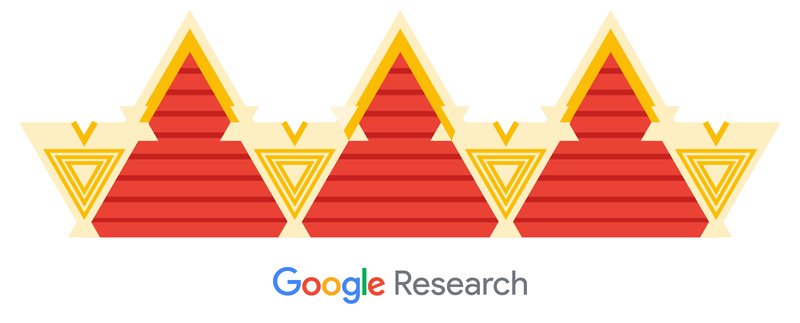
September 1 - 7 · CONFERENCES & EVENTS

AUGUST 22 · BLOG
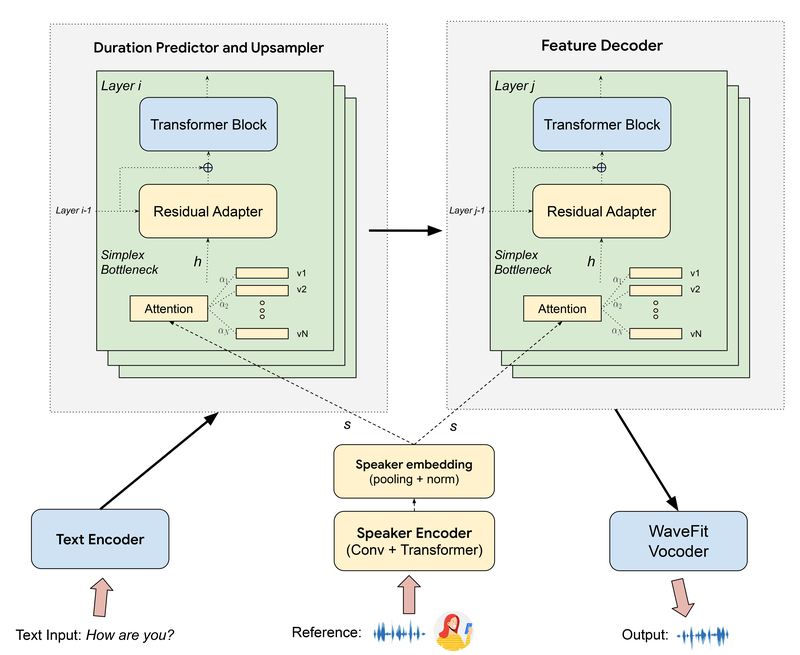
AUGUST 21 · BLOG
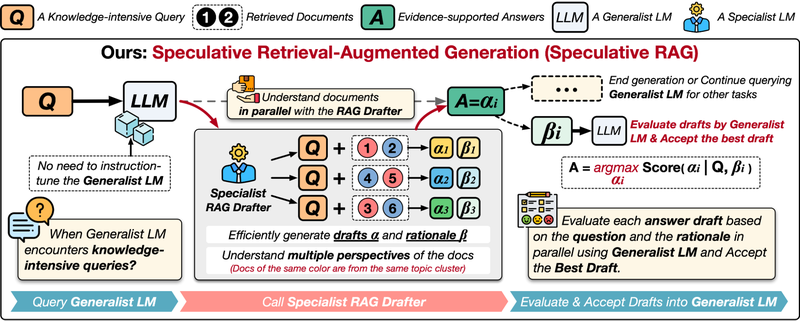
AUGUST 16 · BLOG
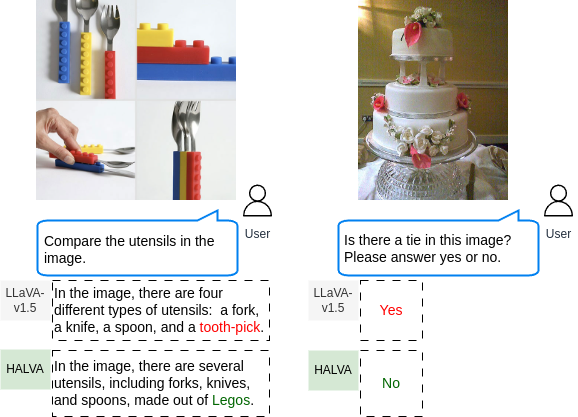
AUGUST 9 · BLOG
Our research drives real-world change
Generative ai in health.

Transforming medicine with generative AI
- HeAR: A bioacoustic model designed to flag early signs of disease Blog
- Advancing medical AI with Med-Gemini Blog
- AMIE: A research AI system for diagnostic medical reasoning and conversations Blog
- MedLM: generative AI fine-tuned for the healthcare industry Blog
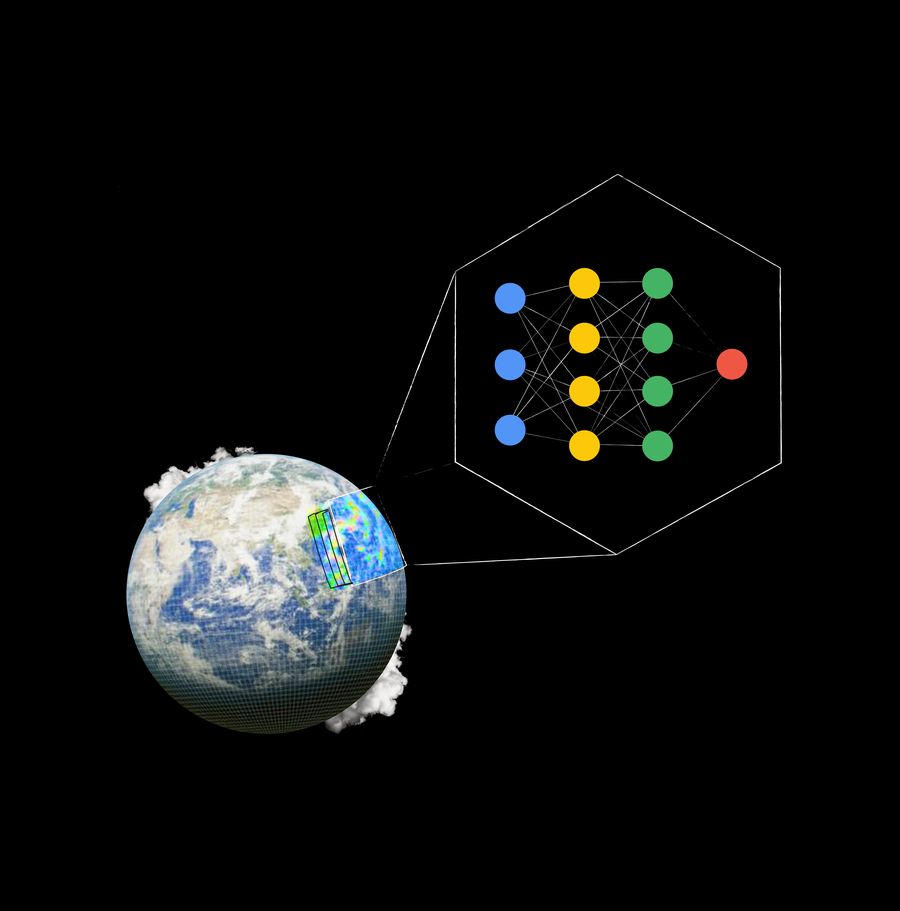
Fast, efficient, and precise climate predictions
- How AI is improving climate prediction Video
- Neural general circulation models for weather and climate Journal article
- Meet a Google Researcher Video
- Hybrid ML + physics model of the Earth's atmosphere Dataset
See our impact across other projects

Open Buildings

We work across domains
Our vast breadth of work covers AI/ML foundations, responsible human-centric technology, science & societal impact, computing paradigms, and algorithms & optimization. Our research teams impact technology used by people all over the world.
One research paper started it all
The research we do today becomes the Google of the future. Google itself began with a research paper, published in 1998, and was the foundation of Google Search. Our ongoing research over the past 25 years has transformed not only the company, but how people are able to interact with the world and its information.
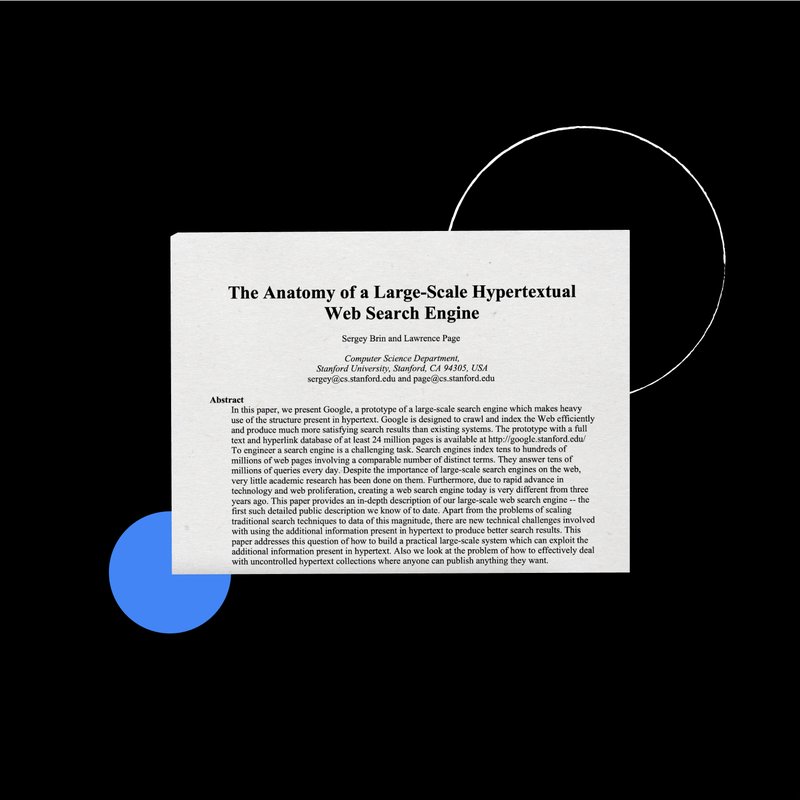
Responsible research is at the heart of what we do
The impact we create from our research has the potential to reach billions of people. That's why everything we do is guided by methodology that is grounded in responsible practices and thorough consideration.

Help us shape the future
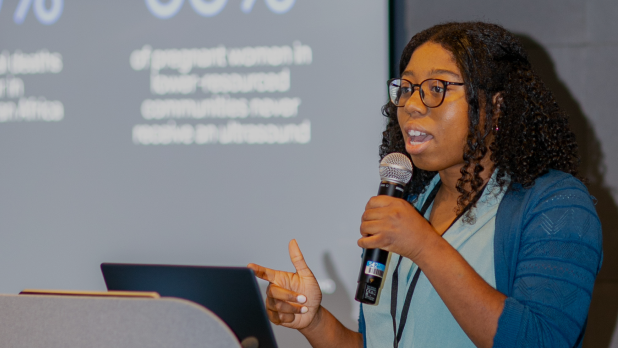
We've been working alongside the academic research community since day one. Explore the ways that we collaborate and provide resources and support through a variety of student and faculty programs.

From Accra to Zürich, to our home base in Mountain View, we’re looking for talented scientists, engineers, interns, and more to join our teams not only at Google Research but all research projects across Google.
Explore our other teams and product areas
Google Cloud
Google DeepMind
LABS.GOOGLE
- More from M-W
- To save this word, you'll need to log in. Log In
Definition of research
(Entry 1 of 2)
Definition of research (Entry 2 of 2)
transitive verb
intransitive verb
- disquisition
- examination
- exploration
- inquisition
- investigation
- delve (into)
- inquire (into)
- investigate
- look (into)
Examples of research in a Sentence
These examples are programmatically compiled from various online sources to illustrate current usage of the word 'research.' Any opinions expressed in the examples do not represent those of Merriam-Webster or its editors. Send us feedback about these examples.
Word History
Middle French recerche , from recercher to go about seeking, from Old French recerchier , from re- + cerchier, sercher to search — more at search
1577, in the meaning defined at sense 3
1588, in the meaning defined at transitive sense 1
Phrases Containing research
- marketing research
- market research
- operations research
- oppo research
research and development
- research park
- translational research
Dictionary Entries Near research
Cite this entry.
“Research.” Merriam-Webster.com Dictionary , Merriam-Webster, https://www.merriam-webster.com/dictionary/research. Accessed 2 Sep. 2024.
Kids Definition
Kids definition of research.
Kids Definition of research (Entry 2 of 2)
More from Merriam-Webster on research
Nglish: Translation of research for Spanish Speakers
Britannica English: Translation of research for Arabic Speakers
Britannica.com: Encyclopedia article about research
Subscribe to America's largest dictionary and get thousands more definitions and advanced search—ad free!

Can you solve 4 words at once?
Word of the day, incandescent.
See Definitions and Examples »
Get Word of the Day daily email!
Popular in Grammar & Usage
Plural and possessive names: a guide, 31 useful rhetorical devices, more commonly misspelled words, why does english have so many silent letters, your vs. you're: how to use them correctly, popular in wordplay, 8 words for lesser-known musical instruments, it's a scorcher words for the summer heat, 7 shakespearean insults to make life more interesting, birds say the darndest things, 10 words from taylor swift songs (merriam's version), games & quizzes.

Have a language expert improve your writing
Run a free plagiarism check in 10 minutes, generate accurate citations for free.
- Knowledge Base
Methodology
Research Methods | Definitions, Types, Examples
Research methods are specific procedures for collecting and analyzing data. Developing your research methods is an integral part of your research design . When planning your methods, there are two key decisions you will make.
First, decide how you will collect data . Your methods depend on what type of data you need to answer your research question :
- Qualitative vs. quantitative : Will your data take the form of words or numbers?
- Primary vs. secondary : Will you collect original data yourself, or will you use data that has already been collected by someone else?
- Descriptive vs. experimental : Will you take measurements of something as it is, or will you perform an experiment?
Second, decide how you will analyze the data .
- For quantitative data, you can use statistical analysis methods to test relationships between variables.
- For qualitative data, you can use methods such as thematic analysis to interpret patterns and meanings in the data.
Table of contents
Methods for collecting data, examples of data collection methods, methods for analyzing data, examples of data analysis methods, other interesting articles, frequently asked questions about research methods.
Data is the information that you collect for the purposes of answering your research question . The type of data you need depends on the aims of your research.
Qualitative vs. quantitative data
Your choice of qualitative or quantitative data collection depends on the type of knowledge you want to develop.
For questions about ideas, experiences and meanings, or to study something that can’t be described numerically, collect qualitative data .
If you want to develop a more mechanistic understanding of a topic, or your research involves hypothesis testing , collect quantitative data .
| Qualitative | to broader populations. . | |
|---|---|---|
| Quantitative | . |
You can also take a mixed methods approach , where you use both qualitative and quantitative research methods.
Primary vs. secondary research
Primary research is any original data that you collect yourself for the purposes of answering your research question (e.g. through surveys , observations and experiments ). Secondary research is data that has already been collected by other researchers (e.g. in a government census or previous scientific studies).
If you are exploring a novel research question, you’ll probably need to collect primary data . But if you want to synthesize existing knowledge, analyze historical trends, or identify patterns on a large scale, secondary data might be a better choice.
| Primary | . | methods. |
|---|---|---|
| Secondary |
Descriptive vs. experimental data
In descriptive research , you collect data about your study subject without intervening. The validity of your research will depend on your sampling method .
In experimental research , you systematically intervene in a process and measure the outcome. The validity of your research will depend on your experimental design .
To conduct an experiment, you need to be able to vary your independent variable , precisely measure your dependent variable, and control for confounding variables . If it’s practically and ethically possible, this method is the best choice for answering questions about cause and effect.
| Descriptive | . . | |
|---|---|---|
| Experimental |
Prevent plagiarism. Run a free check.
| Research method | Primary or secondary? | Qualitative or quantitative? | When to use |
|---|---|---|---|
| Primary | Quantitative | To test cause-and-effect relationships. | |
| Primary | Quantitative | To understand general characteristics of a population. | |
| Interview/focus group | Primary | Qualitative | To gain more in-depth understanding of a topic. |
| Observation | Primary | Either | To understand how something occurs in its natural setting. |
| Secondary | Either | To situate your research in an existing body of work, or to evaluate trends within a research topic. | |
| Either | Either | To gain an in-depth understanding of a specific group or context, or when you don’t have the resources for a large study. |
Your data analysis methods will depend on the type of data you collect and how you prepare it for analysis.
Data can often be analyzed both quantitatively and qualitatively. For example, survey responses could be analyzed qualitatively by studying the meanings of responses or quantitatively by studying the frequencies of responses.
Qualitative analysis methods
Qualitative analysis is used to understand words, ideas, and experiences. You can use it to interpret data that was collected:
- From open-ended surveys and interviews , literature reviews , case studies , ethnographies , and other sources that use text rather than numbers.
- Using non-probability sampling methods .
Qualitative analysis tends to be quite flexible and relies on the researcher’s judgement, so you have to reflect carefully on your choices and assumptions and be careful to avoid research bias .
Quantitative analysis methods
Quantitative analysis uses numbers and statistics to understand frequencies, averages and correlations (in descriptive studies) or cause-and-effect relationships (in experiments).
You can use quantitative analysis to interpret data that was collected either:
- During an experiment .
- Using probability sampling methods .
Because the data is collected and analyzed in a statistically valid way, the results of quantitative analysis can be easily standardized and shared among researchers.
| Research method | Qualitative or quantitative? | When to use |
|---|---|---|
| Quantitative | To analyze data collected in a statistically valid manner (e.g. from experiments, surveys, and observations). | |
| Meta-analysis | Quantitative | To statistically analyze the results of a large collection of studies. Can only be applied to studies that collected data in a statistically valid manner. |
| Qualitative | To analyze data collected from interviews, , or textual sources. To understand general themes in the data and how they are communicated. | |
| Either | To analyze large volumes of textual or visual data collected from surveys, literature reviews, or other sources. Can be quantitative (i.e. frequencies of words) or qualitative (i.e. meanings of words). |
Here's why students love Scribbr's proofreading services
Discover proofreading & editing
If you want to know more about statistics , methodology , or research bias , make sure to check out some of our other articles with explanations and examples.
- Chi square test of independence
- Statistical power
- Descriptive statistics
- Degrees of freedom
- Pearson correlation
- Null hypothesis
- Double-blind study
- Case-control study
- Research ethics
- Data collection
- Hypothesis testing
- Structured interviews
Research bias
- Hawthorne effect
- Unconscious bias
- Recall bias
- Halo effect
- Self-serving bias
- Information bias
Quantitative research deals with numbers and statistics, while qualitative research deals with words and meanings.
Quantitative methods allow you to systematically measure variables and test hypotheses . Qualitative methods allow you to explore concepts and experiences in more detail.
In mixed methods research , you use both qualitative and quantitative data collection and analysis methods to answer your research question .
A sample is a subset of individuals from a larger population . Sampling means selecting the group that you will actually collect data from in your research. For example, if you are researching the opinions of students in your university, you could survey a sample of 100 students.
In statistics, sampling allows you to test a hypothesis about the characteristics of a population.
The research methods you use depend on the type of data you need to answer your research question .
- If you want to measure something or test a hypothesis , use quantitative methods . If you want to explore ideas, thoughts and meanings, use qualitative methods .
- If you want to analyze a large amount of readily-available data, use secondary data. If you want data specific to your purposes with control over how it is generated, collect primary data.
- If you want to establish cause-and-effect relationships between variables , use experimental methods. If you want to understand the characteristics of a research subject, use descriptive methods.
Methodology refers to the overarching strategy and rationale of your research project . It involves studying the methods used in your field and the theories or principles behind them, in order to develop an approach that matches your objectives.
Methods are the specific tools and procedures you use to collect and analyze data (for example, experiments, surveys , and statistical tests ).
In shorter scientific papers, where the aim is to report the findings of a specific study, you might simply describe what you did in a methods section .
In a longer or more complex research project, such as a thesis or dissertation , you will probably include a methodology section , where you explain your approach to answering the research questions and cite relevant sources to support your choice of methods.
Is this article helpful?
Other students also liked, writing strong research questions | criteria & examples.
- What Is a Research Design | Types, Guide & Examples
- Data Collection | Definition, Methods & Examples
More interesting articles
- Between-Subjects Design | Examples, Pros, & Cons
- Cluster Sampling | A Simple Step-by-Step Guide with Examples
- Confounding Variables | Definition, Examples & Controls
- Construct Validity | Definition, Types, & Examples
- Content Analysis | Guide, Methods & Examples
- Control Groups and Treatment Groups | Uses & Examples
- Control Variables | What Are They & Why Do They Matter?
- Correlation vs. Causation | Difference, Designs & Examples
- Correlational Research | When & How to Use
- Critical Discourse Analysis | Definition, Guide & Examples
- Cross-Sectional Study | Definition, Uses & Examples
- Descriptive Research | Definition, Types, Methods & Examples
- Ethical Considerations in Research | Types & Examples
- Explanatory and Response Variables | Definitions & Examples
- Explanatory Research | Definition, Guide, & Examples
- Exploratory Research | Definition, Guide, & Examples
- External Validity | Definition, Types, Threats & Examples
- Extraneous Variables | Examples, Types & Controls
- Guide to Experimental Design | Overview, Steps, & Examples
- How Do You Incorporate an Interview into a Dissertation? | Tips
- How to Do Thematic Analysis | Step-by-Step Guide & Examples
- How to Write a Literature Review | Guide, Examples, & Templates
- How to Write a Strong Hypothesis | Steps & Examples
- Inclusion and Exclusion Criteria | Examples & Definition
- Independent vs. Dependent Variables | Definition & Examples
- Inductive Reasoning | Types, Examples, Explanation
- Inductive vs. Deductive Research Approach | Steps & Examples
- Internal Validity in Research | Definition, Threats, & Examples
- Internal vs. External Validity | Understanding Differences & Threats
- Longitudinal Study | Definition, Approaches & Examples
- Mediator vs. Moderator Variables | Differences & Examples
- Mixed Methods Research | Definition, Guide & Examples
- Multistage Sampling | Introductory Guide & Examples
- Naturalistic Observation | Definition, Guide & Examples
- Operationalization | A Guide with Examples, Pros & Cons
- Population vs. Sample | Definitions, Differences & Examples
- Primary Research | Definition, Types, & Examples
- Qualitative vs. Quantitative Research | Differences, Examples & Methods
- Quasi-Experimental Design | Definition, Types & Examples
- Questionnaire Design | Methods, Question Types & Examples
- Random Assignment in Experiments | Introduction & Examples
- Random vs. Systematic Error | Definition & Examples
- Reliability vs. Validity in Research | Difference, Types and Examples
- Reproducibility vs Replicability | Difference & Examples
- Reproducibility vs. Replicability | Difference & Examples
- Sampling Methods | Types, Techniques & Examples
- Semi-Structured Interview | Definition, Guide & Examples
- Simple Random Sampling | Definition, Steps & Examples
- Single, Double, & Triple Blind Study | Definition & Examples
- Stratified Sampling | Definition, Guide & Examples
- Structured Interview | Definition, Guide & Examples
- Survey Research | Definition, Examples & Methods
- Systematic Review | Definition, Example, & Guide
- Systematic Sampling | A Step-by-Step Guide with Examples
- Textual Analysis | Guide, 3 Approaches & Examples
- The 4 Types of Reliability in Research | Definitions & Examples
- The 4 Types of Validity in Research | Definitions & Examples
- Transcribing an Interview | 5 Steps & Transcription Software
- Triangulation in Research | Guide, Types, Examples
- Types of Interviews in Research | Guide & Examples
- Types of Research Designs Compared | Guide & Examples
- Types of Variables in Research & Statistics | Examples
- Unstructured Interview | Definition, Guide & Examples
- What Is a Case Study? | Definition, Examples & Methods
- What Is a Case-Control Study? | Definition & Examples
- What Is a Cohort Study? | Definition & Examples
- What Is a Conceptual Framework? | Tips & Examples
- What Is a Controlled Experiment? | Definitions & Examples
- What Is a Double-Barreled Question?
- What Is a Focus Group? | Step-by-Step Guide & Examples
- What Is a Likert Scale? | Guide & Examples
- What Is a Prospective Cohort Study? | Definition & Examples
- What Is a Retrospective Cohort Study? | Definition & Examples
- What Is Action Research? | Definition & Examples
- What Is an Observational Study? | Guide & Examples
- What Is Concurrent Validity? | Definition & Examples
- What Is Content Validity? | Definition & Examples
- What Is Convenience Sampling? | Definition & Examples
- What Is Convergent Validity? | Definition & Examples
- What Is Criterion Validity? | Definition & Examples
- What Is Data Cleansing? | Definition, Guide & Examples
- What Is Deductive Reasoning? | Explanation & Examples
- What Is Discriminant Validity? | Definition & Example
- What Is Ecological Validity? | Definition & Examples
- What Is Ethnography? | Definition, Guide & Examples
- What Is Face Validity? | Guide, Definition & Examples
- What Is Non-Probability Sampling? | Types & Examples
- What Is Participant Observation? | Definition & Examples
- What Is Peer Review? | Types & Examples
- What Is Predictive Validity? | Examples & Definition
- What Is Probability Sampling? | Types & Examples
- What Is Purposive Sampling? | Definition & Examples
- What Is Qualitative Observation? | Definition & Examples
- What Is Qualitative Research? | Methods & Examples
- What Is Quantitative Observation? | Definition & Examples
- What Is Quantitative Research? | Definition, Uses & Methods
What is your plagiarism score?
P-Value And Statistical Significance: What It Is & Why It Matters
Saul McLeod, PhD
Editor-in-Chief for Simply Psychology
BSc (Hons) Psychology, MRes, PhD, University of Manchester
Saul McLeod, PhD., is a qualified psychology teacher with over 18 years of experience in further and higher education. He has been published in peer-reviewed journals, including the Journal of Clinical Psychology.
Learn about our Editorial Process
Olivia Guy-Evans, MSc
Associate Editor for Simply Psychology
BSc (Hons) Psychology, MSc Psychology of Education
Olivia Guy-Evans is a writer and associate editor for Simply Psychology. She has previously worked in healthcare and educational sectors.
On This Page:
The p-value in statistics quantifies the evidence against a null hypothesis. A low p-value suggests data is inconsistent with the null, potentially favoring an alternative hypothesis. Common significance thresholds are 0.05 or 0.01.
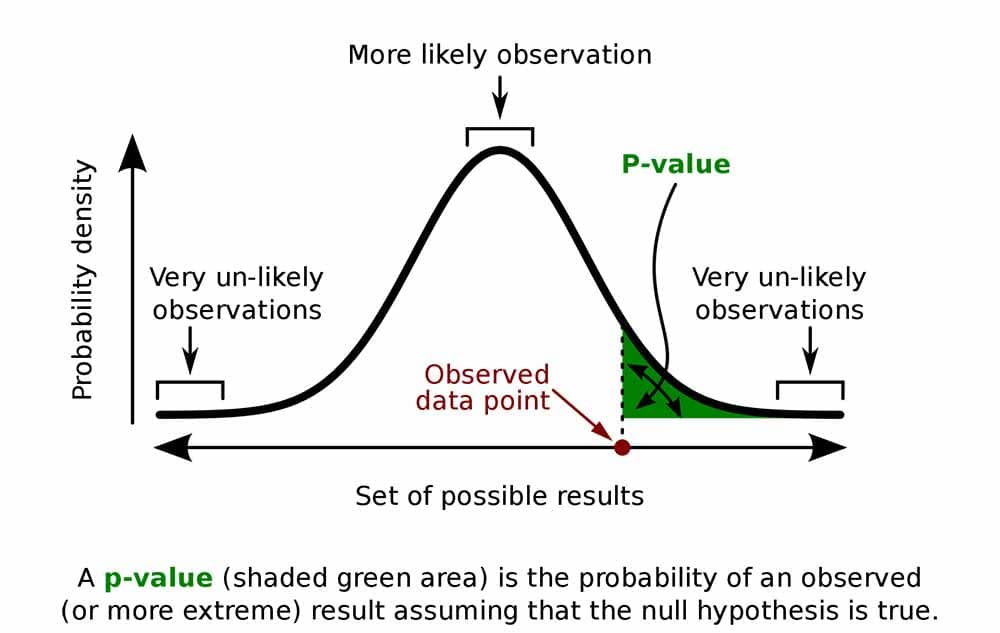
Hypothesis testing
When you perform a statistical test, a p-value helps you determine the significance of your results in relation to the null hypothesis.
The null hypothesis (H0) states no relationship exists between the two variables being studied (one variable does not affect the other). It states the results are due to chance and are not significant in supporting the idea being investigated. Thus, the null hypothesis assumes that whatever you try to prove did not happen.
The alternative hypothesis (Ha or H1) is the one you would believe if the null hypothesis is concluded to be untrue.
The alternative hypothesis states that the independent variable affected the dependent variable, and the results are significant in supporting the theory being investigated (i.e., the results are not due to random chance).
What a p-value tells you
A p-value, or probability value, is a number describing how likely it is that your data would have occurred by random chance (i.e., that the null hypothesis is true).
The level of statistical significance is often expressed as a p-value between 0 and 1.
The smaller the p -value, the less likely the results occurred by random chance, and the stronger the evidence that you should reject the null hypothesis.
Remember, a p-value doesn’t tell you if the null hypothesis is true or false. It just tells you how likely you’d see the data you observed (or more extreme data) if the null hypothesis was true. It’s a piece of evidence, not a definitive proof.
Example: Test Statistic and p-Value
Suppose you’re conducting a study to determine whether a new drug has an effect on pain relief compared to a placebo. If the new drug has no impact, your test statistic will be close to the one predicted by the null hypothesis (no difference between the drug and placebo groups), and the resulting p-value will be close to 1. It may not be precisely 1 because real-world variations may exist. Conversely, if the new drug indeed reduces pain significantly, your test statistic will diverge further from what’s expected under the null hypothesis, and the p-value will decrease. The p-value will never reach zero because there’s always a slim possibility, though highly improbable, that the observed results occurred by random chance.
P-value interpretation
The significance level (alpha) is a set probability threshold (often 0.05), while the p-value is the probability you calculate based on your study or analysis.
A p-value less than or equal to your significance level (typically ≤ 0.05) is statistically significant.
A p-value less than or equal to a predetermined significance level (often 0.05 or 0.01) indicates a statistically significant result, meaning the observed data provide strong evidence against the null hypothesis.
This suggests the effect under study likely represents a real relationship rather than just random chance.
For instance, if you set α = 0.05, you would reject the null hypothesis if your p -value ≤ 0.05.
It indicates strong evidence against the null hypothesis, as there is less than a 5% probability the null is correct (and the results are random).
Therefore, we reject the null hypothesis and accept the alternative hypothesis.
Example: Statistical Significance
Upon analyzing the pain relief effects of the new drug compared to the placebo, the computed p-value is less than 0.01, which falls well below the predetermined alpha value of 0.05. Consequently, you conclude that there is a statistically significant difference in pain relief between the new drug and the placebo.
What does a p-value of 0.001 mean?
A p-value of 0.001 is highly statistically significant beyond the commonly used 0.05 threshold. It indicates strong evidence of a real effect or difference, rather than just random variation.
Specifically, a p-value of 0.001 means there is only a 0.1% chance of obtaining a result at least as extreme as the one observed, assuming the null hypothesis is correct.
Such a small p-value provides strong evidence against the null hypothesis, leading to rejecting the null in favor of the alternative hypothesis.
A p-value more than the significance level (typically p > 0.05) is not statistically significant and indicates strong evidence for the null hypothesis.
This means we retain the null hypothesis and reject the alternative hypothesis. You should note that you cannot accept the null hypothesis; we can only reject it or fail to reject it.
Note : when the p-value is above your threshold of significance, it does not mean that there is a 95% probability that the alternative hypothesis is true.
One-Tailed Test

Two-Tailed Test
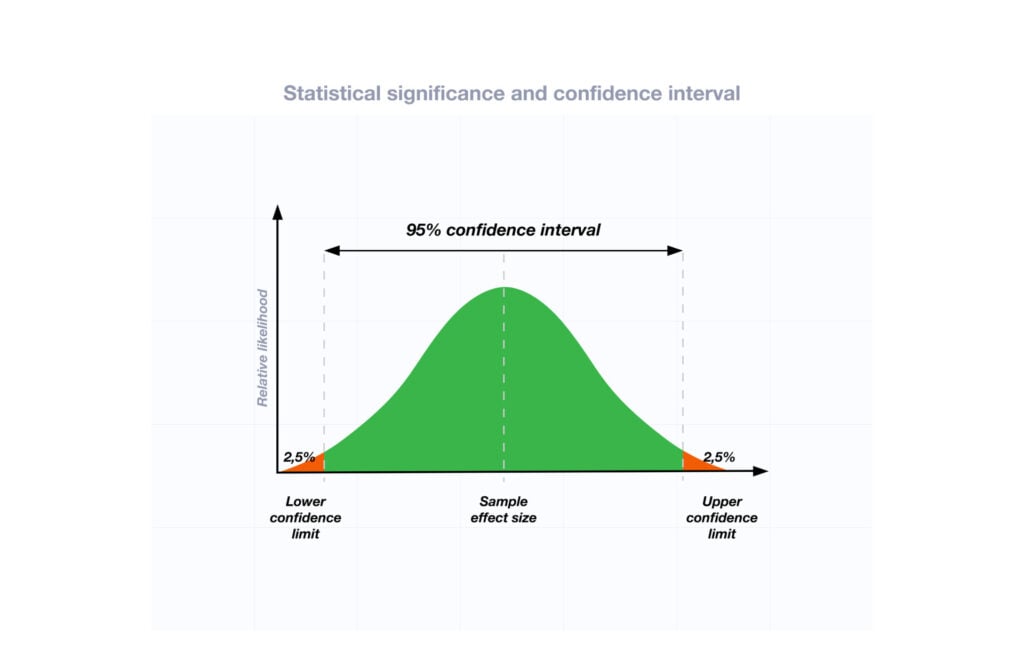
How do you calculate the p-value ?
Most statistical software packages like R, SPSS, and others automatically calculate your p-value. This is the easiest and most common way.
Online resources and tables are available to estimate the p-value based on your test statistic and degrees of freedom.
These tables help you understand how often you would expect to see your test statistic under the null hypothesis.
Understanding the Statistical Test:
Different statistical tests are designed to answer specific research questions or hypotheses. Each test has its own underlying assumptions and characteristics.
For example, you might use a t-test to compare means, a chi-squared test for categorical data, or a correlation test to measure the strength of a relationship between variables.
Be aware that the number of independent variables you include in your analysis can influence the magnitude of the test statistic needed to produce the same p-value.
This factor is particularly important to consider when comparing results across different analyses.
Example: Choosing a Statistical Test
If you’re comparing the effectiveness of just two different drugs in pain relief, a two-sample t-test is a suitable choice for comparing these two groups. However, when you’re examining the impact of three or more drugs, it’s more appropriate to employ an Analysis of Variance ( ANOVA) . Utilizing multiple pairwise comparisons in such cases can lead to artificially low p-values and an overestimation of the significance of differences between the drug groups.
How to report
A statistically significant result cannot prove that a research hypothesis is correct (which implies 100% certainty).
Instead, we may state our results “provide support for” or “give evidence for” our research hypothesis (as there is still a slight probability that the results occurred by chance and the null hypothesis was correct – e.g., less than 5%).
Example: Reporting the results
In our comparison of the pain relief effects of the new drug and the placebo, we observed that participants in the drug group experienced a significant reduction in pain ( M = 3.5; SD = 0.8) compared to those in the placebo group ( M = 5.2; SD = 0.7), resulting in an average difference of 1.7 points on the pain scale (t(98) = -9.36; p < 0.001).
The 6th edition of the APA style manual (American Psychological Association, 2010) states the following on the topic of reporting p-values:
“When reporting p values, report exact p values (e.g., p = .031) to two or three decimal places. However, report p values less than .001 as p < .001.
The tradition of reporting p values in the form p < .10, p < .05, p < .01, and so forth, was appropriate in a time when only limited tables of critical values were available.” (p. 114)
- Do not use 0 before the decimal point for the statistical value p as it cannot equal 1. In other words, write p = .001 instead of p = 0.001.
- Please pay attention to issues of italics ( p is always italicized) and spacing (either side of the = sign).
- p = .000 (as outputted by some statistical packages such as SPSS) is impossible and should be written as p < .001.
- The opposite of significant is “nonsignificant,” not “insignificant.”
Why is the p -value not enough?
A lower p-value is sometimes interpreted as meaning there is a stronger relationship between two variables.
However, statistical significance means that it is unlikely that the null hypothesis is true (less than 5%).
To understand the strength of the difference between the two groups (control vs. experimental) a researcher needs to calculate the effect size .
When do you reject the null hypothesis?
In statistical hypothesis testing, you reject the null hypothesis when the p-value is less than or equal to the significance level (α) you set before conducting your test. The significance level is the probability of rejecting the null hypothesis when it is true. Commonly used significance levels are 0.01, 0.05, and 0.10.
Remember, rejecting the null hypothesis doesn’t prove the alternative hypothesis; it just suggests that the alternative hypothesis may be plausible given the observed data.
The p -value is conditional upon the null hypothesis being true but is unrelated to the truth or falsity of the alternative hypothesis.
What does p-value of 0.05 mean?
If your p-value is less than or equal to 0.05 (the significance level), you would conclude that your result is statistically significant. This means the evidence is strong enough to reject the null hypothesis in favor of the alternative hypothesis.
Are all p-values below 0.05 considered statistically significant?
No, not all p-values below 0.05 are considered statistically significant. The threshold of 0.05 is commonly used, but it’s just a convention. Statistical significance depends on factors like the study design, sample size, and the magnitude of the observed effect.
A p-value below 0.05 means there is evidence against the null hypothesis, suggesting a real effect. However, it’s essential to consider the context and other factors when interpreting results.
Researchers also look at effect size and confidence intervals to determine the practical significance and reliability of findings.
How does sample size affect the interpretation of p-values?
Sample size can impact the interpretation of p-values. A larger sample size provides more reliable and precise estimates of the population, leading to narrower confidence intervals.
With a larger sample, even small differences between groups or effects can become statistically significant, yielding lower p-values. In contrast, smaller sample sizes may not have enough statistical power to detect smaller effects, resulting in higher p-values.
Therefore, a larger sample size increases the chances of finding statistically significant results when there is a genuine effect, making the findings more trustworthy and robust.
Can a non-significant p-value indicate that there is no effect or difference in the data?
No, a non-significant p-value does not necessarily indicate that there is no effect or difference in the data. It means that the observed data do not provide strong enough evidence to reject the null hypothesis.
There could still be a real effect or difference, but it might be smaller or more variable than the study was able to detect.
Other factors like sample size, study design, and measurement precision can influence the p-value. It’s important to consider the entire body of evidence and not rely solely on p-values when interpreting research findings.
Can P values be exactly zero?
While a p-value can be extremely small, it cannot technically be absolute zero. When a p-value is reported as p = 0.000, the actual p-value is too small for the software to display. This is often interpreted as strong evidence against the null hypothesis. For p values less than 0.001, report as p < .001
Further Information
- P Value Calculator From T Score
- P-Value Calculator For Chi-Square
- P-values and significance tests (Kahn Academy)
- Hypothesis testing and p-values (Kahn Academy)
- Wasserstein, R. L., Schirm, A. L., & Lazar, N. A. (2019). Moving to a world beyond “ p “< 0.05”.
- Criticism of using the “ p “< 0.05”.
- Publication manual of the American Psychological Association
- Statistics for Psychology Book Download
Bland, J. M., & Altman, D. G. (1994). One and two sided tests of significance: Authors’ reply. BMJ: British Medical Journal , 309 (6958), 874.
Goodman, S. N., & Royall, R. (1988). Evidence and scientific research. American Journal of Public Health , 78 (12), 1568-1574.
Goodman, S. (2008, July). A dirty dozen: twelve p-value misconceptions . In Seminars in hematology (Vol. 45, No. 3, pp. 135-140). WB Saunders.
Lang, J. M., Rothman, K. J., & Cann, C. I. (1998). That confounded P-value. Epidemiology (Cambridge, Mass.) , 9 (1), 7-8.
Thank you for visiting nature.com. You are using a browser version with limited support for CSS. To obtain the best experience, we recommend you use a more up to date browser (or turn off compatibility mode in Internet Explorer). In the meantime, to ensure continued support, we are displaying the site without styles and JavaScript.
- View all journals
- Explore content
- About the journal
- Publish with us
- Sign up for alerts
- NEWS FEATURE
- 27 September 2023
- Correction 10 October 2023
AI and science: what 1,600 researchers think
- Richard Van Noorden &
- Jeffrey M. Perkel
You can also search for this author in PubMed Google Scholar
Artificial-intelligence (AI) tools are becoming increasingly common in science, and many scientists anticipate that they will soon be central to the practice of research, suggests a Nature survey of more than 1,600 researchers around the world.
Access options
Access Nature and 54 other Nature Portfolio journals
Get Nature+, our best-value online-access subscription
24,99 € / 30 days
cancel any time
Subscribe to this journal
Receive 51 print issues and online access
185,98 € per year
only 3,65 € per issue
Rent or buy this article
Prices vary by article type
Prices may be subject to local taxes which are calculated during checkout
Nature 621 , 672-675 (2023)
doi: https://doi.org/10.1038/d41586-023-02980-0
Updates & Corrections
Correction 10 October 2023 : An earlier version of this story erroneously affiliated Kedar Hippalgaonkar with the National University of Singapore.
Reprints and permissions
Supplementary Information
- AI survey methodology (docx)
- AI survey questions (pdf)
- AI survey results (xlsx)
Related Articles

- Machine learning
- Mathematics and computing
- Computer science

Researchers built an ‘AI Scientist’ — what can it do?
News 30 AUG 24

LLMs produce racist output when prompted in African American English
News & Views 28 AUG 24
Urgently clarify how AI can be used in medicine under new EU law
Correspondence 27 AUG 24

AI generates covertly racist decisions about people based on their dialect
Article 28 AUG 24

Closed-loop transfer enables artificial intelligence to yield chemical knowledge

Science treasures from Microsoft mogul up for auction — and researchers are salivating
News 23 AUG 24

Inside China’s race to lead the world in nuclear fusion
News Feature 28 AUG 24

The cool technologies that could protect cities from dangerous heat
News Feature 27 AUG 24

Can South Korea regain its edge in innovation?
Nature Index 21 AUG 24
Permanent Researcher Positions for Materials Science
NIMS (Tsukuba, Japan) invites international applications from researchers who can conduct research in materials science.
Tsukuba, Ibaraki (JP)
National Institute for Materials Science (NIMS)

Osaka University Immunology Frontier Research Center Postdoctoral Researcher
IFReC, Osaka University in Japan offers Advanced Postdoc Positions for Immunology, Cell Biology, Bioinformatics and Bioimaging.
Suita Campus, Osaka University in Osaka, Japan
Immunology Frontier Research Center, Osaka University
Tenure-track Associate Professor [Female Only]
Seeking tenure-track assoc. professor for interdisciplinary research in nanoprobe life sciences or related fields at WPI Nano Life Science Institute.
Kanazawa, Ishikawa, Japan (JP)
Nano Life Science Institute, Kanazawa University
Assistant/Associate Professor
Center for Virology and Vaccine Research at Beth Israel Deaconess Medical Center is seeking Assistant or Associate Professor.
Boston, Massachusetts (US)
Beth Israel Deaconess Medical Center (BIDMC)
OPEN FACULTY POSITION-INSTITUTE OF MOLECULAR BIOLOGY, ACADEMIA SINICA, TAIWAN, ROC
One tenure-track faculty position is open to establish an active research program in all disciplines of molecular and cellular biology.
Taipei (TW)
The Institute of Molecular Biology, Academia Sinica, Taiwan
Sign up for the Nature Briefing newsletter — what matters in science, free to your inbox daily.
Quick links
- Explore articles by subject
- Guide to authors
- Editorial policies
Educational resources and simple solutions for your research journey

What is Research? Definition, Types, Methods, and Examples
Academic research is a methodical way of exploring new ideas or understanding things we already know. It involves gathering and studying information to answer questions or test ideas and requires careful thinking and persistence to reach meaningful conclusions. Let’s try to understand what research is.
Table of Contents
Why is research important?
Whether it’s doing experiments, analyzing data, or studying old documents, research helps us learn more about the world. Without it, we rely on guesswork and hearsay, often leading to mistakes and misconceptions. By using systematic methods, research helps us see things clearly, free from biases. (1)
What is the purpose of research?
In the real world, academic research is also a key driver of innovation. It brings many benefits, such as creating valuable opportunities and fostering partnerships between academia and industry. By turning research into products and services, science makes meaningful improvements to people’s lives and boosts the economy. (2)(3)
What are the characteristics of research?
The research process collects accurate information systematically. Logic is used to analyze the collected data and find insights. Checking the collected data thoroughly ensures accuracy. Research also leads to new questions using existing data.
Accuracy is key in research, which requires precise data collection and analysis. In scientific research, laboratories ensure accuracy by carefully calibrating instruments and controlling experiments. Every step is checked to maintain integrity, from instruments to final results. Accuracy gives reliable insights, which in turn help advance knowledge.
Types of research
The different forms of research serve distinct purposes in expanding knowledge and understanding:
- Exploratory research ventures into uncharted territories, exploring new questions or problem areas without aiming for conclusive answers. For instance, a study may delve into unexplored market segments to better understand consumer behaviour patterns.
- Descriptive research delves into current issues by collecting and analyzing data to describe the behaviour of a sample population. For instance, a survey may investigate millennials’ spending habits to gain insights into their purchasing behaviours.
- Explanatory research, also known as causal research, seeks to understand the impact of specific changes in existing procedures. An example might be a study examining how changes in drug dosage over some time improve patients’ health.
- Correlational research examines connections between two sets of data to uncover meaningful relationships. For instance, a study may analyze the relationship between advertising spending and sales revenue.
- Theoretical research deepens existing knowledge without attempting to solve specific problems. For example, a study may explore theoretical frameworks to understand the underlying principles of human behaviour.
- Applied research focuses on real-world issues and aims to provide practical solutions. An example could be a study investigating the effectiveness of a new teaching method in improving student performance in schools. (4)
Types of research methods
- Qualitative Method: Qualitative research gathers non-numerical data through interactions with participants. Methods include one-to-one interviews, focus groups, ethnographic studies, text analysis, and case studies. For example, a researcher interviews cancer patients to understand how different treatments impact their lives emotionally.
- Quantitative Method: Quantitative methods deal with numbers and measurable data to understand relationships between variables. They use systematic methods to investigate events and aim to explain or predict outcomes. For example, Researchers study how exercise affects heart health by measuring variables like heart rate and blood pressure in a large group before and after an exercise program. (5)
Basic steps involved in the research process
Here are the basic steps to help you understand the research process:
- Choose your topic: Decide the specific subject or area that you want to study and investigate. This decision is the foundation of your research journey.
- Find information: Look for information related to your research topic. You can search in journals, books, online, or ask experts for help.
- Assess your sources: Make sure the information you find is reliable and trustworthy. Check the author’s credentials and the publication date.
- Take notes: Write down important information from your sources that you can use in your research.
- Write your paper: Use your notes to write your research paper. Broadly, start with an introduction, then write the body of your paper, and finish with a conclusion.
- Cite your sources: Give credit to the sources you used by including citations in your paper.
- Proofread: Check your paper thoroughly for any errors in spelling, grammar, or punctuation before you submit it. (6)
How to ensure research accuracy?
Ensuring accuracy in research is a mix of several essential steps:
- Clarify goals: Start by defining clear objectives for your research. Identify your research question, hypothesis, and variables of interest. This clarity will help guide your data collection and analysis methods, ensuring that your research stays focused and purposeful.
- Use reliable data: Select trustworthy sources for your information, whether they are primary data collected by you or secondary data obtained from other sources. For example, if you’re studying climate change, use data from reputable scientific organizations with transparent methodologies.
- Validate data: Validate your data to ensure it meets the standards of your research project. Check for errors, outliers, and inconsistencies at different stages, such as during data collection, entry, cleaning, or analysis.
- Document processes: Documenting your data collection and analysis processes is essential for transparency and reproducibility. Record details such as data collection methods, cleaning procedures, and analysis techniques used. This documentation not only helps you keep track of your research but also enables others to understand and replicate your work.
- Review results: Finally, review and verify your research findings to confirm their accuracy and reliability. Double-check your analyses, cross-reference your data, and seek feedback from peers or supervisors. (7)
Research is crucial for better understanding our world and for social and economic growth. By following ethical guidelines and ensuring accuracy, researchers play a critical role in driving this progress, whether through exploring new topics or deepening existing knowledge.
References:
- Why is Research Important – Introductory Psychology – Washington State University
- The Role Of Scientific Research In Driving Business Innovation – Forbes
- Innovation – Royal Society
- Types of Research – Definition & Methods – Bachelor Print
- What Is Qualitative vs. Quantitative Study? – National University
- Basic Steps in the Research Process – North Hennepin Community College
- Best Practices for Ensuring Data Accuracy in Research – LinkedIn
Researcher.Life is a subscription-based platform that unifies the best AI tools and services designed to speed up, simplify, and streamline every step of a researcher’s journey. The Researcher.Life All Access Pack is a one-of-a-kind subscription that unlocks full access to an AI writing assistant, literature recommender, journal finder, scientific illustration tool, and exclusive discounts on professional publication services from Editage.
Based on 21+ years of experience in academia, Researcher.Life All Access empowers researchers to put their best research forward and move closer to success. Explore our top AI Tools pack, AI Tools + Publication Services pack, or Build Your Own Plan. Find everything a researcher needs to succeed, all in one place – Get All Access now starting at just $17 a month !
Related Posts

Back to School – Lock-in All Access Pack for a Year at the Best Price

Journal Turnaround Time: Researcher.Life and Scholarly Intelligence Join Hands to Empower Researchers with Publication Time Insights
- Privacy Policy

Home » Research Paper – Structure, Examples and Writing Guide
Research Paper – Structure, Examples and Writing Guide
Table of Contents

Research Paper
Definition:
Research Paper is a written document that presents the author’s original research, analysis, and interpretation of a specific topic or issue.
It is typically based on Empirical Evidence, and may involve qualitative or quantitative research methods, or a combination of both. The purpose of a research paper is to contribute new knowledge or insights to a particular field of study, and to demonstrate the author’s understanding of the existing literature and theories related to the topic.
Structure of Research Paper
The structure of a research paper typically follows a standard format, consisting of several sections that convey specific information about the research study. The following is a detailed explanation of the structure of a research paper:
The title page contains the title of the paper, the name(s) of the author(s), and the affiliation(s) of the author(s). It also includes the date of submission and possibly, the name of the journal or conference where the paper is to be published.
The abstract is a brief summary of the research paper, typically ranging from 100 to 250 words. It should include the research question, the methods used, the key findings, and the implications of the results. The abstract should be written in a concise and clear manner to allow readers to quickly grasp the essence of the research.
Introduction
The introduction section of a research paper provides background information about the research problem, the research question, and the research objectives. It also outlines the significance of the research, the research gap that it aims to fill, and the approach taken to address the research question. Finally, the introduction section ends with a clear statement of the research hypothesis or research question.
Literature Review
The literature review section of a research paper provides an overview of the existing literature on the topic of study. It includes a critical analysis and synthesis of the literature, highlighting the key concepts, themes, and debates. The literature review should also demonstrate the research gap and how the current study seeks to address it.
The methods section of a research paper describes the research design, the sample selection, the data collection and analysis procedures, and the statistical methods used to analyze the data. This section should provide sufficient detail for other researchers to replicate the study.
The results section presents the findings of the research, using tables, graphs, and figures to illustrate the data. The findings should be presented in a clear and concise manner, with reference to the research question and hypothesis.
The discussion section of a research paper interprets the findings and discusses their implications for the research question, the literature review, and the field of study. It should also address the limitations of the study and suggest future research directions.
The conclusion section summarizes the main findings of the study, restates the research question and hypothesis, and provides a final reflection on the significance of the research.
The references section provides a list of all the sources cited in the paper, following a specific citation style such as APA, MLA or Chicago.
How to Write Research Paper
You can write Research Paper by the following guide:
- Choose a Topic: The first step is to select a topic that interests you and is relevant to your field of study. Brainstorm ideas and narrow down to a research question that is specific and researchable.
- Conduct a Literature Review: The literature review helps you identify the gap in the existing research and provides a basis for your research question. It also helps you to develop a theoretical framework and research hypothesis.
- Develop a Thesis Statement : The thesis statement is the main argument of your research paper. It should be clear, concise and specific to your research question.
- Plan your Research: Develop a research plan that outlines the methods, data sources, and data analysis procedures. This will help you to collect and analyze data effectively.
- Collect and Analyze Data: Collect data using various methods such as surveys, interviews, observations, or experiments. Analyze data using statistical tools or other qualitative methods.
- Organize your Paper : Organize your paper into sections such as Introduction, Literature Review, Methods, Results, Discussion, and Conclusion. Ensure that each section is coherent and follows a logical flow.
- Write your Paper : Start by writing the introduction, followed by the literature review, methods, results, discussion, and conclusion. Ensure that your writing is clear, concise, and follows the required formatting and citation styles.
- Edit and Proofread your Paper: Review your paper for grammar and spelling errors, and ensure that it is well-structured and easy to read. Ask someone else to review your paper to get feedback and suggestions for improvement.
- Cite your Sources: Ensure that you properly cite all sources used in your research paper. This is essential for giving credit to the original authors and avoiding plagiarism.
Research Paper Example
Note : The below example research paper is for illustrative purposes only and is not an actual research paper. Actual research papers may have different structures, contents, and formats depending on the field of study, research question, data collection and analysis methods, and other factors. Students should always consult with their professors or supervisors for specific guidelines and expectations for their research papers.
Research Paper Example sample for Students:
Title: The Impact of Social Media on Mental Health among Young Adults
Abstract: This study aims to investigate the impact of social media use on the mental health of young adults. A literature review was conducted to examine the existing research on the topic. A survey was then administered to 200 university students to collect data on their social media use, mental health status, and perceived impact of social media on their mental health. The results showed that social media use is positively associated with depression, anxiety, and stress. The study also found that social comparison, cyberbullying, and FOMO (Fear of Missing Out) are significant predictors of mental health problems among young adults.
Introduction: Social media has become an integral part of modern life, particularly among young adults. While social media has many benefits, including increased communication and social connectivity, it has also been associated with negative outcomes, such as addiction, cyberbullying, and mental health problems. This study aims to investigate the impact of social media use on the mental health of young adults.
Literature Review: The literature review highlights the existing research on the impact of social media use on mental health. The review shows that social media use is associated with depression, anxiety, stress, and other mental health problems. The review also identifies the factors that contribute to the negative impact of social media, including social comparison, cyberbullying, and FOMO.
Methods : A survey was administered to 200 university students to collect data on their social media use, mental health status, and perceived impact of social media on their mental health. The survey included questions on social media use, mental health status (measured using the DASS-21), and perceived impact of social media on their mental health. Data were analyzed using descriptive statistics and regression analysis.
Results : The results showed that social media use is positively associated with depression, anxiety, and stress. The study also found that social comparison, cyberbullying, and FOMO are significant predictors of mental health problems among young adults.
Discussion : The study’s findings suggest that social media use has a negative impact on the mental health of young adults. The study highlights the need for interventions that address the factors contributing to the negative impact of social media, such as social comparison, cyberbullying, and FOMO.
Conclusion : In conclusion, social media use has a significant impact on the mental health of young adults. The study’s findings underscore the need for interventions that promote healthy social media use and address the negative outcomes associated with social media use. Future research can explore the effectiveness of interventions aimed at reducing the negative impact of social media on mental health. Additionally, longitudinal studies can investigate the long-term effects of social media use on mental health.
Limitations : The study has some limitations, including the use of self-report measures and a cross-sectional design. The use of self-report measures may result in biased responses, and a cross-sectional design limits the ability to establish causality.
Implications: The study’s findings have implications for mental health professionals, educators, and policymakers. Mental health professionals can use the findings to develop interventions that address the negative impact of social media use on mental health. Educators can incorporate social media literacy into their curriculum to promote healthy social media use among young adults. Policymakers can use the findings to develop policies that protect young adults from the negative outcomes associated with social media use.
References :
- Twenge, J. M., & Campbell, W. K. (2019). Associations between screen time and lower psychological well-being among children and adolescents: Evidence from a population-based study. Preventive medicine reports, 15, 100918.
- Primack, B. A., Shensa, A., Escobar-Viera, C. G., Barrett, E. L., Sidani, J. E., Colditz, J. B., … & James, A. E. (2017). Use of multiple social media platforms and symptoms of depression and anxiety: A nationally-representative study among US young adults. Computers in Human Behavior, 69, 1-9.
- Van der Meer, T. G., & Verhoeven, J. W. (2017). Social media and its impact on academic performance of students. Journal of Information Technology Education: Research, 16, 383-398.
Appendix : The survey used in this study is provided below.
Social Media and Mental Health Survey
- How often do you use social media per day?
- Less than 30 minutes
- 30 minutes to 1 hour
- 1 to 2 hours
- 2 to 4 hours
- More than 4 hours
- Which social media platforms do you use?
- Others (Please specify)
- How often do you experience the following on social media?
- Social comparison (comparing yourself to others)
- Cyberbullying
- Fear of Missing Out (FOMO)
- Have you ever experienced any of the following mental health problems in the past month?
- Do you think social media use has a positive or negative impact on your mental health?
- Very positive
- Somewhat positive
- Somewhat negative
- Very negative
- In your opinion, which factors contribute to the negative impact of social media on mental health?
- Social comparison
- In your opinion, what interventions could be effective in reducing the negative impact of social media on mental health?
- Education on healthy social media use
- Counseling for mental health problems caused by social media
- Social media detox programs
- Regulation of social media use
Thank you for your participation!
Applications of Research Paper
Research papers have several applications in various fields, including:
- Advancing knowledge: Research papers contribute to the advancement of knowledge by generating new insights, theories, and findings that can inform future research and practice. They help to answer important questions, clarify existing knowledge, and identify areas that require further investigation.
- Informing policy: Research papers can inform policy decisions by providing evidence-based recommendations for policymakers. They can help to identify gaps in current policies, evaluate the effectiveness of interventions, and inform the development of new policies and regulations.
- Improving practice: Research papers can improve practice by providing evidence-based guidance for professionals in various fields, including medicine, education, business, and psychology. They can inform the development of best practices, guidelines, and standards of care that can improve outcomes for individuals and organizations.
- Educating students : Research papers are often used as teaching tools in universities and colleges to educate students about research methods, data analysis, and academic writing. They help students to develop critical thinking skills, research skills, and communication skills that are essential for success in many careers.
- Fostering collaboration: Research papers can foster collaboration among researchers, practitioners, and policymakers by providing a platform for sharing knowledge and ideas. They can facilitate interdisciplinary collaborations and partnerships that can lead to innovative solutions to complex problems.
When to Write Research Paper
Research papers are typically written when a person has completed a research project or when they have conducted a study and have obtained data or findings that they want to share with the academic or professional community. Research papers are usually written in academic settings, such as universities, but they can also be written in professional settings, such as research organizations, government agencies, or private companies.
Here are some common situations where a person might need to write a research paper:
- For academic purposes: Students in universities and colleges are often required to write research papers as part of their coursework, particularly in the social sciences, natural sciences, and humanities. Writing research papers helps students to develop research skills, critical thinking skills, and academic writing skills.
- For publication: Researchers often write research papers to publish their findings in academic journals or to present their work at academic conferences. Publishing research papers is an important way to disseminate research findings to the academic community and to establish oneself as an expert in a particular field.
- To inform policy or practice : Researchers may write research papers to inform policy decisions or to improve practice in various fields. Research findings can be used to inform the development of policies, guidelines, and best practices that can improve outcomes for individuals and organizations.
- To share new insights or ideas: Researchers may write research papers to share new insights or ideas with the academic or professional community. They may present new theories, propose new research methods, or challenge existing paradigms in their field.
Purpose of Research Paper
The purpose of a research paper is to present the results of a study or investigation in a clear, concise, and structured manner. Research papers are written to communicate new knowledge, ideas, or findings to a specific audience, such as researchers, scholars, practitioners, or policymakers. The primary purposes of a research paper are:
- To contribute to the body of knowledge : Research papers aim to add new knowledge or insights to a particular field or discipline. They do this by reporting the results of empirical studies, reviewing and synthesizing existing literature, proposing new theories, or providing new perspectives on a topic.
- To inform or persuade: Research papers are written to inform or persuade the reader about a particular issue, topic, or phenomenon. They present evidence and arguments to support their claims and seek to persuade the reader of the validity of their findings or recommendations.
- To advance the field: Research papers seek to advance the field or discipline by identifying gaps in knowledge, proposing new research questions or approaches, or challenging existing assumptions or paradigms. They aim to contribute to ongoing debates and discussions within a field and to stimulate further research and inquiry.
- To demonstrate research skills: Research papers demonstrate the author’s research skills, including their ability to design and conduct a study, collect and analyze data, and interpret and communicate findings. They also demonstrate the author’s ability to critically evaluate existing literature, synthesize information from multiple sources, and write in a clear and structured manner.
Characteristics of Research Paper
Research papers have several characteristics that distinguish them from other forms of academic or professional writing. Here are some common characteristics of research papers:
- Evidence-based: Research papers are based on empirical evidence, which is collected through rigorous research methods such as experiments, surveys, observations, or interviews. They rely on objective data and facts to support their claims and conclusions.
- Structured and organized: Research papers have a clear and logical structure, with sections such as introduction, literature review, methods, results, discussion, and conclusion. They are organized in a way that helps the reader to follow the argument and understand the findings.
- Formal and objective: Research papers are written in a formal and objective tone, with an emphasis on clarity, precision, and accuracy. They avoid subjective language or personal opinions and instead rely on objective data and analysis to support their arguments.
- Citations and references: Research papers include citations and references to acknowledge the sources of information and ideas used in the paper. They use a specific citation style, such as APA, MLA, or Chicago, to ensure consistency and accuracy.
- Peer-reviewed: Research papers are often peer-reviewed, which means they are evaluated by other experts in the field before they are published. Peer-review ensures that the research is of high quality, meets ethical standards, and contributes to the advancement of knowledge in the field.
- Objective and unbiased: Research papers strive to be objective and unbiased in their presentation of the findings. They avoid personal biases or preconceptions and instead rely on the data and analysis to draw conclusions.
Advantages of Research Paper
Research papers have many advantages, both for the individual researcher and for the broader academic and professional community. Here are some advantages of research papers:
- Contribution to knowledge: Research papers contribute to the body of knowledge in a particular field or discipline. They add new information, insights, and perspectives to existing literature and help advance the understanding of a particular phenomenon or issue.
- Opportunity for intellectual growth: Research papers provide an opportunity for intellectual growth for the researcher. They require critical thinking, problem-solving, and creativity, which can help develop the researcher’s skills and knowledge.
- Career advancement: Research papers can help advance the researcher’s career by demonstrating their expertise and contributions to the field. They can also lead to new research opportunities, collaborations, and funding.
- Academic recognition: Research papers can lead to academic recognition in the form of awards, grants, or invitations to speak at conferences or events. They can also contribute to the researcher’s reputation and standing in the field.
- Impact on policy and practice: Research papers can have a significant impact on policy and practice. They can inform policy decisions, guide practice, and lead to changes in laws, regulations, or procedures.
- Advancement of society: Research papers can contribute to the advancement of society by addressing important issues, identifying solutions to problems, and promoting social justice and equality.
Limitations of Research Paper
Research papers also have some limitations that should be considered when interpreting their findings or implications. Here are some common limitations of research papers:
- Limited generalizability: Research findings may not be generalizable to other populations, settings, or contexts. Studies often use specific samples or conditions that may not reflect the broader population or real-world situations.
- Potential for bias : Research papers may be biased due to factors such as sample selection, measurement errors, or researcher biases. It is important to evaluate the quality of the research design and methods used to ensure that the findings are valid and reliable.
- Ethical concerns: Research papers may raise ethical concerns, such as the use of vulnerable populations or invasive procedures. Researchers must adhere to ethical guidelines and obtain informed consent from participants to ensure that the research is conducted in a responsible and respectful manner.
- Limitations of methodology: Research papers may be limited by the methodology used to collect and analyze data. For example, certain research methods may not capture the complexity or nuance of a particular phenomenon, or may not be appropriate for certain research questions.
- Publication bias: Research papers may be subject to publication bias, where positive or significant findings are more likely to be published than negative or non-significant findings. This can skew the overall findings of a particular area of research.
- Time and resource constraints: Research papers may be limited by time and resource constraints, which can affect the quality and scope of the research. Researchers may not have access to certain data or resources, or may be unable to conduct long-term studies due to practical limitations.
About the author
Muhammad Hassan
Researcher, Academic Writer, Web developer
You may also like

Research Paper Title – Writing Guide and Example

Problem Statement – Writing Guide, Examples and...

Future Research – Thesis Guide

Table of Contents – Types, Formats, Examples

Research Paper Title Page – Example and Making...

Survey Instruments – List and Their Uses
An official website of the United States government
Here's how you know
Official websites use .gov A .gov website belongs to an official government organization in the United States.
Secure .gov websites use HTTPS. A lock ( Lock Locked padlock ) or https:// means you've safely connected to the .gov website. Share sensitive information only on official, secure websites.

NSF announces 4 new Engineering Research Centers focused on biotechnology, manufacturing, robotics and sustainability
Engineering innovations transform our lives and energize the economy. The U.S. National Science Foundation announces a five-year investment of $104 million, with a potential 10-year investment of up to $208 million, in four new NSF Engineering Research Centers (ERCs) to create technology-powered solutions that benefit the nation for decades to come.
"NSF's Engineering Research Centers ask big questions in order to catalyze solutions with far-reaching impacts," said NSF Director Sethuraman Panchanathan. "NSF Engineering Research Centers are powerhouses of discovery and innovation, bringing America's great engineering minds to bear on our toughest challenges. By collaborating with industry and training the workforce of the future, ERCs create an innovation ecosystem that can accelerate engineering innovations, producing tremendous economic and societal benefits for the nation."
The new centers will develop technologies to tackle the carbon challenge, expand physical capabilities, make heating and cooling more sustainable and enable the U.S. supply and manufacturing of natural rubber.
The 2024 ERCs are:
- NSF ERC for Carbon Utilization Redesign through Biomanufacturing-Empowered Decarbonization (CURB) — Washington University in St. Louis in partnership with the University of Delaware, Prairie View A&M University and Texas A&M University. CURB will create manufacturing systems that convert CO2 to a broad range of products much more efficiently than current state-of-the-art engineered and natural systems.
- NSF ERC for Environmentally Applied Refrigerant Technology Hub (EARTH) — University of Kansas in partnership with Lehigh University, University of Hawaii, University of Maryland, University of Notre Dame and University of South Dakota. EARTH will create a transformative, sustainable refrigerant lifecycle to reduce global warming from refrigerants while increasing the energy efficiency of heating, ventilation and cooling.
- NSF ERC for Human AugmentatioN via Dexterity (HAND) — Northwestern University in partnership with Carnegie Mellon University, Florida A&M University, and Texas A&M University, and with engagement of MIT. HAND will revolutionize the ability of robots to augment human labor by transforming dexterous robot hands into versatile, easy-to-integrate tools.
- NSF ERC for Transformation of American Rubber through Domestic Innovation for Supply Security (TARDISS) — The Ohio State University in partnership with Caltech, North Carolina State University, Texas Tech University and the University of California, Merced. TARDISS will create bridges between engineering, biology, and agriculture to revolutionize and on-shore alternative natural rubber production from U.S. crops.
Since its founding in 1985, NSF's ERC program has funded 83 centers (including the four announced today) that receive support for up to 10 years. The centers build partnerships with educational institutions, government agencies and industry stakeholders to support innovation and inclusion in established and emerging engineering research.
Visit NSF's website and read about NSF Engineering Research Centers .
Research areas
Official SPD/Unisoc Flash Tool
- Upgrade Tool
- Research Tool
- Factory Tool
SPD Research Tool R4.0.0001
SPD Research Tool R4.0.0001, also known as Spreadtrum Research Tool, is a Windows utility that allows you to flash the firmware on mobile devices running Spreadtrum chipsets. It features a simple user interface, making it easy to use even for beginners. The tool supports various Spreadtrum-based devices, including smartphones, tablets, and feature phones.
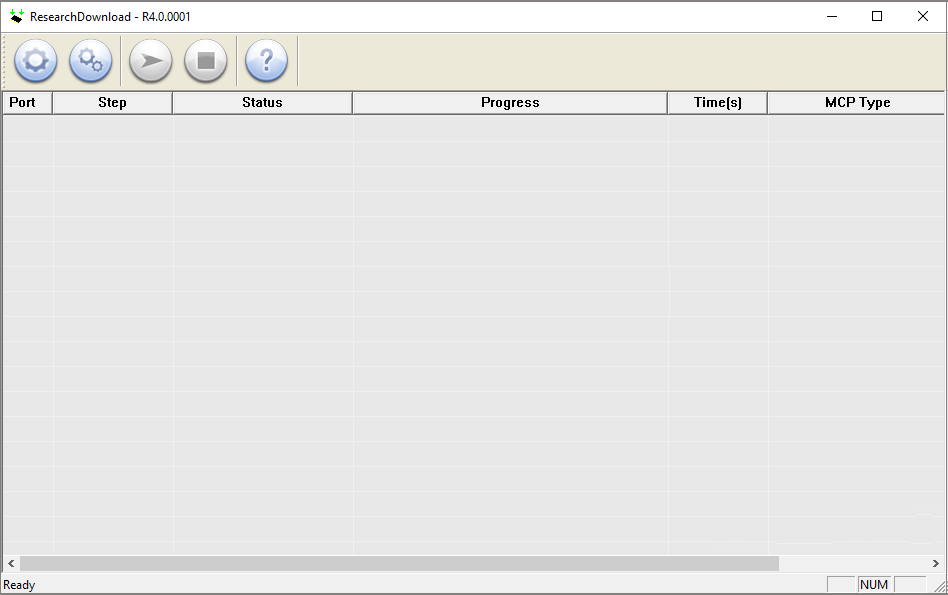
SPD Research Tool R4.0.0001 for Windows
The SPD Research Tool R4.0.0001 (SpreadTrum Research Tool) is a Windows-based application developed explicitly for flashing or installing firmware on mobile devices powered by SpreadTrum/Unisoc chipsets.
Some of the Key features of the SPD Research Tool R4.0.0001 include:
- Firmware Flashing : This core feature enables users to update or downgrade the firmware of a SpreadTrum-powered device. It allows the installation of official or custom firmware, providing an avenue to fix software glitches, enhance performance, or install new features.
- PAC Firmware Support : The SPD Research Tool is specifically designed to work with .pac firmware files. These files contain all the necessary information to flash the device properly, including the operating system, user interface, and other essential components.
- Multiple Languages : Understanding that users worldwide may require this tool, some versions offer support for various languages. This feature enhances accessibility, making it easier for non-English speakers to understand and use the tool.
- Format and Reset : This function allows users to format the device or perform a factory reset. It can be a valuable solution to software-related problems, such as system crashes, unresponsiveness, or persistent errors, restoring the device to its original state.
- Recovery Flashing : Flashing custom recovery images is a more advanced feature, allowing users more control over their device’s backup, restoration, and firmware installation. It enables the use of custom ROMs and other modifications to the system.
- Error Handling : Designed with built-in error handling capabilities, the tool provides specific error codes and messages if something goes wrong during the flashing process. This assists in troubleshooting and guiding users in identifying and rectifying the issue.
Download the SPD Research Tool R4.0.0001
| Name | SPD Research Tool R4.0.0001 |
| Type | Flash Tool |
| Developer | Unisoc Communications |
| File Name | SPD_Research_Tool_R4.0.0001.zip |
| File Size | 2.17 MB |
| Version | R4.0.0001 |
| Supports | Microsoft Windows (32-bit and 64-bit) |
| Unzip Password | SFT123 |
Frequently Asked Questions
What is spd research tool r4.0.0001.
SPD Research Tool R4.0.0001 is a small utility that is easy to use and can be used to flash the firmware on various Spreadtrum-powered devices, including smartphones, tablets, and feature phones. It can also be used to repair devices that are bricked or stuck in a boot loop.
How do I install SPD Research Tool R4.0.0001?
SPD Research Tool R4.0.0001 is a portable application, eliminating the need for installation on your computer. Download the Flash Tool onto your computer, extract the contents, and open the ResearchDownload.exe file to launch the program.
How to use SPD Research Tool R4.0.0001?
Is spd research tool r4.0.0001 free.
Yes, SPD Research Tool R4.0.0001 is generally offered free of charge for personal use. Technicians and individual users widely use it to flash the firmware on devices with SpreadTrum/Unisoc chipsets.
Is SPD Research Tool R4.0.0001 Safe?
Yes, SPD Research Tool R4.0.0001 is safe for PCs, laptops, and mobile devices. Furthermore, since this flash tool is an official release from the Unisoc Communications community, it ensures safety and security when deployed on your computing devices.
Where can I find compatible firmware?
- Privacy Policy
- Source Code
Copyright © 2016-2024 SPD Flash Tool. All Rights Reserved.

Download Research Wizard
Download / update software.

Research Wizard for Windows Latest Version: 4.0.962 12/06/2019
Download / Update Software
Research Wizard for Mac (beta) Latest Version: 4.0.961 08/16/2019
RW is not available to download on a mobile device. Please visit this site on your computer to download.
TIP: When updating your software, do not uninstall the old version, just follow the installation procedure as if it was a first time installation. This will decrease the installation time, as the process will affect only the updated files.
REFERENCE MATERIAL AND HELP
See How It Works
Stock Picking Video Backtesting Video Advanced Backtesting Video
Read All About It
Research Wizard User Manual (.pdf) Top 10 Screening Strategies (.pdf)
Official websites use .gov
Secure .gov websites use HTTPS
Dr. Jon T. Kosloski
Director of the All-domain Anomaly Resolution Office

Dr. Jon T. Kosloski serves as the Director of the All-domain Anomaly Resolution Office (AARO). Prior to that, Dr. Kosloski held technical and leadership positions within the Research Directorate of the National Security Agency (NSA). In that capacity, he led advanced mission-oriented research in the fields of networking and computing, and served as a subject matter expert in the area of Free Space Optics, advising various DoD agencies. In addition to his optics research and crypto-mathematics, Dr. Kosloski invented an advanced language-agnostic search engine and served at the DoD Special Communications Enterprise Office.
Dr. Kosloski received Bachelor’s degrees in Mathematics and Physics from California State University, San Bernardino, and a Ph.D. in Electrical Engineering from Johns Hopkins University. The focus of his Doctoral research was the invention of novel devices that leverage principles from quantum optics to receive very weak phase-encoded signals. After completing the theoretical analysis of two new optical receiver designs, Dr. Kosloski worked with scientists from the National Institute of Standards and Technology to demonstrate the abilities of his designs to achieve record sensitivities. Dr. Kosloski is also a graduate from NSA’s Cryptanalysis Development Program.
Defense.gov
Helpful links.
- Live Events
- Today in DOD
- For the Media
- DOD Resources
- DOD Careers
- Help Center
- DOD / Military Websites
- Agency Financial Report
- Value of Service
- Taking Care of Our People
- FY 2025 Defense Budget
- National Defense Strategy
The Department of Defense provides the military forces needed to deter war and ensure our nation's security.

New research busts the myth that crossbred ‘designer dogs’ are healthier than pedigrees
Research Fellow, Animal Welfare Science Centre, The University of Melbourne
Disclosure statement
Mia Cobb does not work for, consult, own shares in or receive funding from any company or organisation that would benefit from this article, and has disclosed no relevant affiliations beyond their academic appointment.
University of Melbourne provides funding as a founding partner of The Conversation AU.
View all partners
Labradoodles, puggles, dorgis, cavoodles, cavapoos: whatever you call them, there’s no escaping the explosion of designer crossbreeds parading along our streets and through our dog parks these days.
People have flocked to these hybrid dogs as the health problems associated with pedigree breeds became more widely known. As the theory goes, crossbreed designer dogs are more genetically diverse, so are less likely to suffer the health issues plaguing purebreds.
But are these designer mixes actually healthier than their purebred cousins? This was the question researchers from the United Kingdom’s Royal Veterinary College set out to answer in a new paper published overnight .
The study focused on three common poodle crossbreeds: cockapoos, labradoodles and cavapoos. It found they were no more or less healthy than their pure-breed counterparts. The researchers hope the findings will help dog owners make more informed, evidence-based decisions when selecting their next furry friend.

Designer crosbreeds
Most dogs alive today were not bred under human control. Regardless, humans have created more than 400 modern dog breeds in around 200 years, each with their own looks and temperaments.
Some popular dog breeds, such as the golden retriever, have mixed-breed origin stories . However, many are “pedigree dogs” bred from a limited gene pool.
Advocates for purebred dogs say they have more predictable health, behaviour and appearance. And many pedigree registers no longer permit the inclusion of crossbreed dogs.
Over time, however, this lack of genetic diversity among purebreds has led to extreme body types and serious welfare problems for many dogs.
To overcome these issues, some breeders have turned to “out-crossing”: deliberately mating two dogs from different breeds. The goal is to dilute inherited physical or behaviour problems, producing healthier puppies. The aspiration being that the offspring will prove more robust than their parents, also known as “ hybrid vigour ”.
This has led to a rise in “designer crossbreeds”. In particular, poodles have been crossed with other breeds, such as:
the cavalier King Charles spaniel-cross, known as the cavoodle in Australia and cavapoo in the United Kingdom
the cocker spaniel-cross, known as the spoodle in Australia and cockapoo in the UK
The labrador retriever-cross, known as the labradoodle. This mix was originally bred by an Australian , to create a non-allergenic guide dog.

Oodles of health issues?
The research from the Royal Veterinary College involved a survey of about 9,400 people.
Some owned a cross-bred dog – either a cockapoo (spoodle), cavapoo (cavoodle) or labradoodle. Others owned one of their purebred “progenitor” or founder breeds – either a cavalier King Charles spaniel, cocker spaniel, labrador retriever or poodle. All dogs were aged under five years.
The authors tested the assumption that designer crossbreeds have less chance of suffering common disorders compared to their founder breeds.
They compared odds for the 57 most common health disorders across the three designer crossbreeds with each of their founding (progenitor) breeds. In all, 342 comparisons were made.
Common health issues included eye and ear infections, diarrhoea, and cruciate ligament rupture.
And the results? The poodle-cross dogs and comparable founder-breed dogs shared health outcomes 87% of the time.
Crossbreeds were more likely to experience a small number of disorders (7%). But they were less likely to experience a small number (6%) of other disorders.
Overall, there was no compelling evidence in these poodle crossbreeds of “hybrid vigour”. There was also no evidence purebreds were significantly healthier than the designer crossbreed dogs.

What does this all mean?
The authors concluded that, given their results, prospective dog owners wondering which dog to buy should consider other factors such as breeding conditions, temperament and the health of a puppy’s parents.
The study focused only on young adult dogs. Crossbreeding may bring health benefits that don’t emerge until later in life. So a study that repeats these questions when the dogs are seniors would help us understand how designer crossbreeds age, and identify risk factors so we can help them age well.
Importantly, the study only looked at three types of crossbreeds, all involving poodles. Other designer crossbreeds may experience better health than their purebred cousins.
For example, flat-faced dogs such as pugs and French bulldogs are likely to experience breathlessness and skin and eye problems. Crossing these breeds with other dogs would reintroduce a proper muzzle to their face, bringing health and welfare advantages .

Who could dogs be?
All this raises important questions. Where do the animals in our lives come from? How are they bred, and is this information transparent ? Are we OK with current breeding practices? And if not, what must change?
It stands to reason that, when searching for the perfect canine companion, we want one that will be healthy, long-lived, and happy to live with us.
These attributes are good for the dog. They are also good for their people. A healthy dog means fewer vet bills. Longer-lived equals more time shared together, and living happily with us translates to less stress, and a better quality of life for everyone in the home.
So how do we find that dog?
Some European countries mandate that dogs must meet strict physical, genetic and behaviour requirements before being registered and used for breeding. This requires a nationally consistent licensing regime and well-resourced enforcement – both of which are lacking in Australia .
What ultimately controls if dogs are healthy, long-lived and happy is us. Breeders decide which dogs to mate. Dog lovers decide which puppy to buy. And when we vote, we help decide how governments regulate the breeding industry.
For the sake of our canine friends, I hope we choose well.
- Dog breeding
- Pet breeding

Director of STEM

Community member - Training Delivery and Development Committee (Volunteer part-time)

Chief Executive Officer

Finance Business Partner

Head of Evidence to Action
- Skip to main content
- Keyboard shortcuts for audio player
Book Reviews
This is genius: a new graphic novel imagines conversations between einstein and kafka.
Tahneer Oksman

Turns out Albert Einstein and Franz Kafka lived in Prague at the same time and had the same circle of friends. In the new graphic novel, Einstein in Kafkaland, Ken Krimstein puts us in the room with two 20th century geniuses. Ken Krimstein / Bloomsbury Publishing hide caption
It’s April 1, 1911, and 32-year-old Albert Einstein — former bureaucrat at the Swiss Patent Office, with a half-decade old doctorate in physics from the University of Zurich — sits in a train car with his two sons and his wife, fellow physicist and mathematician Mileva Marić. They are travelling from Zurich to Prague, where Einstein has landed a job as a full professor in theoretical physics, teaching in the German section of what is now Charles University. He has a few things on his mind, including money troubles, but most critical is his unfinished theory of relativity. When they leave the city 15 months later, Einstein will have cracked the code.
What happens over the course of this long, mysterious year in Prague is the question driving Ken Krimstein’s new graphic novel Einstein in Kafkaland . Part biography, part historical fiction, Krimstein playfully explores the possibilities, building, with footnotes, on a thorough archive of letters, diaries, and other research. The result, a thought-provoking work made up of comics suffused in a gentle mix of aquamarine watercolors, is equal parts joyful and ruminative. (Think: Alice in Wonderland meets The Lives of the Poets meets Krazy Kat. ) The full subtitle to the book — How Albert Fell Down the Rabbit Hole and Came Up with the Universe — signals the lavish whimsy that goes a long way towards making this such a delightful, inspiring read.

Throughout, cartoon-Einstein sports his characteristic pipe alongside a signature frizzy head of hair. But it’s his obsessive ruminations that perhaps most effectively signal what has become Einstein-the-character, a culmination of all the gossip, public appearances, private words, and first-hand accounts of one of the best-known scientists to have ever lived. Krimstein pairs Einstein’s story with that of Franz Kafka, who was 28, virtually unpublished, and living with his parents in a house in Prague when Einstein arrived for his short but impactful stay. What binds the two together, in addition to an alleged one-time meeting at a weekly salon, is a complementary preoccupation with getting at the truth — “the true truth” — against all odds, and against many other people’s better judgements. For both, a journey to find this truth, whether in science or literature, is one that will sometimes alienate as painfully as it may ultimately bind them to others.
During Einstein’s time in Prague, a time in which he works out his theory of relativity, Kafka will have his own breakthrough. In one long feverish night he will pen the short story, most often known in English as “The Judgment,” which will launch an unparalleled writing career forever transforming art and literature. Like Einstein’s completed theory of relativity, Kafka, too, will offer the world a new way of thinking. It’s a way of thinking that, our narrator assures us, “we’re all still struggling to catch up to.”

Einstein in Kafkaland: How Albert Fell Down the Rabbit Hole and Came Up With the Universe by Ken Krimstein Ken Krimstein/Bloomsbury Publishing hide caption
Despite his title, Krimstein centers his book unevenly, focusing mainly on Einstein, and taking us step by step through the meditations that lead to his discovery. Nonetheless, along the way he also provides readers with glimpses into the life of the perpetually melancholic insomniac insurance clerk, Kafka. We witness, for example, an early morning swimming routine with his best bud — and future literary executor — Max Brod. But what Kafka’s presence in the narrative most crucially enables are imagined conversations between him and Einstein. In these, the two puzzle, and sometimes commiserate, over what it means to see the world differently from everyone else. What happens when you believe so confidently in your own hard-won perceptions that you risk killing the heroes that brought you there?
Author Interviews
A new graphic novel depicts the time einstein and kafka met in prague.
Krimstein, a well-published cartoonist whose previous work includes another delightful graphic biography, The Three Escapes of Hannah Arendt , luxuriates in intellectual history shoulder to shoulder with juicy biographical details. He depicts Einstein debating with his foe, Max Abraham; taking fantastical trips into a four-dimensional world with Euclid; and walking and talking with Austrian physicist, and dear friend, Paul Ehrenfest. And he exposes, too, scenes of the future Nobel Prize winner in the bath, trying to kill off bedbugs; or engaging with his young children, and wife, in Gedankenexperiments (thought experiments), to help him think through the problems that continually occupy him.
At its heart, Einstein in Kafkaland is the story of ordinary genius. It unwraps the ways in which genius so often arises out of ordinary circumstances. Perhaps even more compellingly, the book tracks how unimaginable discoveries develop following exchanges with others — friends and family, colleagues and nemeses, neighbors and role models. Aberrations aside, works of genius most wholly emerge in dialogue.
Buy Featured Book
Your purchase helps support NPR programming. How?
- Independent Bookstores
Tahneer Oksman is a writer, teacher, and scholar specializing in memoir as well as graphic novels and comics. She lives in Brooklyn, N.Y.

Training Grants Research Admin
- Madison, Wisconsin
- SCHOOL OF MEDICINE AND PUBLIC HEALTH/DEPARTMENT OF SURGERY
- Sponsored Programs, Grants, and Contracts
- Partially Remote
- Staff-Full Time
- Staff-Part Time
- Opening at: Aug 30 2024 at 09:40 CDT
- Closing at: Sep 15 2024 at 23:55 CDT
Job Summary:
The Training Grants Research Administrator is part of the Office of Grant Administration in the Department of Surgery and reports to the Director of Surgery Sponsored Projects and Grants. This position serves as the coordinator for NIH-funded training grants as well as other extramurally funded research education grants held within the Department of Surgery, provides support to Program Directors in the execution of training grant requirements including recruitment, onboarding, reporting, and curriculum implementation. This position also interfaces with the Director(s) of Postdoctoral Research Training in the Department of Surgery to support the clinical residents in identifying potential funding, research training opportunities, and research mentors as well as assisting with grant submissions as needed. This includes: - Advising and assisting faculty and academic staff in developing and submitting research training-related grant applications, contract proposals, progress and final reports (and related budgets for all). - Keeping faculty, trainees, fellows, and appropriate staff apprised of status of grants, current contract or grant policies, regulations and guidelines made by granting agencies (especially NIH) and campus research offices. - Serving as a liaison with principal investigators (PIs) and granting agencies (including electronic research administration/ERA issues), University offices, etc. - Meeting with faculty and academic staff to identify research interests and to develop funding strategies and plan. - Recruitment, onboarding, and administrative support for research trainees in the Department of Surgery -Support the preparation of annual progress reports which includes collecting trainee progress information as well as updating information from current and past trainees -Working with HR related to trainee appointments and stipend levels -Preparing annual budgets for costs associated with research/academic development time -Supporting the further growth of the training grant portfolio in the Department of Surgery including data collection for grant submission and working with relevant internal workgroups/stakeholders. The person in this position will need to obtain a thorough knowledge of grant proposal development and the conduct of research and administration of research activity. The person in this position should be comfortable speaking in front of others and giving presentations.
Responsibilities:
- 20% Serves as a liaison and expert resource for researchers regarding the interpretation of policy and procedure related to overall sponsored project management
- 25% Works collaboratively with researchers to prepare non-technical materials for proposals, drafting contracts or agreements for review, and/or advising award setup
- 30% Leads researchers in the preparation and/or maintenance documentation, financial management, and/or reporting requirements related to sponsored grants, contracts, or agreements
- 5% May identify funding opportunities and disseminate to principal investigators
- 20% Assists in the development, coordination, and facilitation of training program requirements for multiple research training programs according to established research objectives in alignment with program design and strategic initiatives.
Institutional Statement on Diversity:
Diversity is a source of strength, creativity, and innovation for UW-Madison. We value the contributions of each person and respect the profound ways their identity, culture, background, experience, status, abilities, and opinion enrich the university community. We commit ourselves to the pursuit of excellence in teaching, research, outreach, and diversity as inextricably linked goals. The University of Wisconsin-Madison fulfills its public mission by creating a welcoming and inclusive community for people from every background - people who as students, faculty, and staff serve Wisconsin and the world. For more information on diversity and inclusion on campus, please visit: Diversity and Inclusion
Preferred Bachelor's Degree
Qualifications:
Required Qualifications: -Experience in managing multiple projects and competing deadlines simultaneously -Experience in working independently and as part of a team Preferred Qualifications: -At least 3 years of substantial involvement or familiarity in research, sponsored programs administration either in a sponsoring or recipient organization, or the equivalent in a self-funding organization -Knowledge of NIH and other federal and university regulations for the conduct of research -Experience in medical or research setting -Experience working with trainees/learners -Strong understanding of budget development -Attention to detail and a high level of accuracy in tasks -Ability to interpret and analyze data and present findings in clear a clear and concise manner -Strong interpersonal skills, and excellent oral and written communication skills, with the ability to effectively communicate complex ideas and concepts -Proactive and problem-solving mindset
Full or Part Time: 80% - 100% This position may require some work to be performed in-person, onsite, at a designated campus work location. Some work may be performed remotely, at an offsite, non-campus work location.
Appointment Type, Duration:
Ongoing/Renewable
Minimum $56,112 ANNUAL (12 months) Depending on Qualifications The starting salary for the position is $56,112 but is negotiable based on experience and qualifications. Employees in this position can expect to receive benefits such as generous vacation, holidays, and sick leave; competitive insurances and savings accounts; retirement benefits. Benefits information can be found at ( https://hr.wisc.edu/benefits/ ).
Additional Information:
University sponsorship is not available for this position, including transfers of sponsorship. The selected applicant will be responsible for ensuring their continuous eligibility to work in the United States (i.e. a citizen or national of the United States, a lawful permanent resident, a foreign national authorized to work in the United States without the need of an employer sponsorship) on or before the effective date of appointment. This position is an ongoing position that will require continuous work eligibility. UW-Madison is not an E-Verify employer, and therefore, is not eligible to employ F1-OPT STEM Extension participants. If you are selected for this position you must provide proof of work authorization and eligibility to work.
How to Apply:
To apply for this position, please click on the "Apply Now" button. You will be asked to upload a current resume/CV and a cover letter briefly describing your qualifications and experience. You will also be asked to provide contact information for three (3) references, including your current/most recent supervisor during the application process. References will not be contacted without prior notice.
Samantha Connell [email protected] 608-265-5311 Relay Access (WTRS): 7-1-1. See RELAY_SERVICE for further information.
Official Title:
Research Administrative Spec(SC029)
Department(s):
A53-MEDICAL SCHOOL/SURGERY/RESEARCH ADMIN
Employment Class:
Academic Staff-Renewable
Job Number:
The university of wisconsin-madison is an equal opportunity and affirmative action employer..
You will be redirected to the application to launch your career momentarily. Thank you!
Frequently Asked Questions
Applicant Tutorial
Disability Accommodations
Pay Transparency Policy Statement
Refer a Friend
You've sent this job to a friend!
Website feedback, questions or accessibility issues: [email protected] .
Learn more about accessibility at UW–Madison .
© 2016–2024 Board of Regents of the University of Wisconsin System • Privacy Statement
Before You Go..
Would you like to sign-up for job alerts.
Thank you for subscribing to UW–Madison job alerts!
You're reading a free article with opinions that may differ from The Motley Fool's Premium Investing Services. Become a Motley Fool member today to get instant access to our top analyst recommendations, in-depth research, investing resources, and more. Learn More
Here's How Much Snowflake Spent on Research and Development Last Quarter
- Snowflake's Data Cloud is a revolutionary data unification and analytics platform.
- The company is now focusing on developing AI products, and it's spending heavily on R&D.
- Howevver, investors might be running out of patience with Snowflake's persistent losses.
- Motley Fool Issues Rare “All In” Buy Alert

Developing artificial intelligence products isn't cheap, and Snowflake certainly isn't holding back.
Snowflake 's ( SNOW 0.08% ) flagship product is the Data Cloud, which helps organizations break down data silos to extract more value from the information they harvest from their operations. Since data is the key to developing the most powerful artificial intelligence (AI) models, Snowflake is in the perfect position to build products for that industry.
The company launched its Cortex AI platform in 2023, which allows businesses to combine their data with ready-made large language models (like Meta Platforms ' Llama 3) to create AI software applications. Plus, Cortex comes with pre-built AI tools like Document AI, which allows developers to quickly extract valuable data from unstructured sources like contracts and invoices.
Snowflake loses money each quarter because it invests heavily in growth initiatives like research and development, which is its largest cost. While many tech companies have tried to manage their expenses over the last couple of years, that hasn't been so easy for Snowflake because of its focus on rolling out new AI products and services.
During the recent fiscal 2025 second quarter (ended July 31), Snowflake spent a record $437.6 million on research and development , which was a 40% increase from the year-ago period:
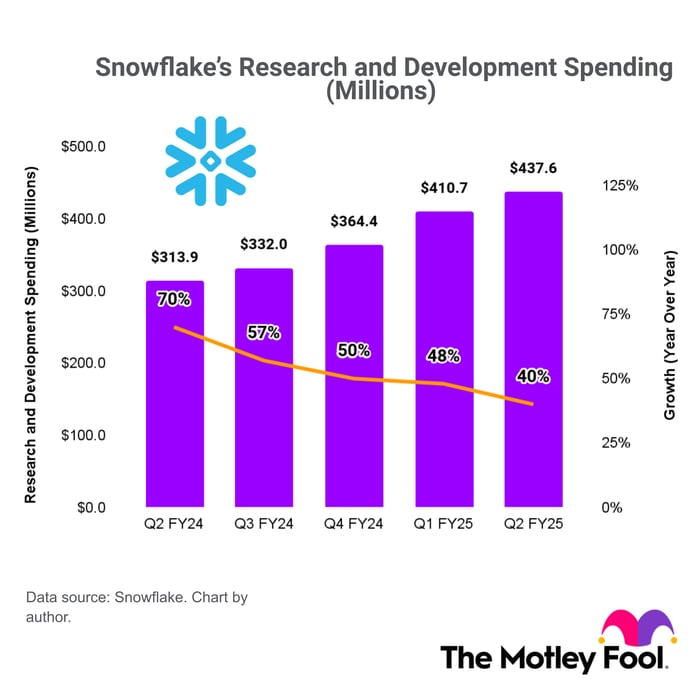
While that growth rate is decelerating, it's still much faster than the company's revenue growth, which came in at 30% in Q2 -- and that figure has also been decelerating over the last couple of years. An increase in operating costs overall led to a $316.9 million net loss for Snowflake during the quarter, which was a 40% jump from the year-ago period.
That trend is unlikely to reverse anytime soon because the company continues to hire more employees every quarter, with its headcount hitting a record high of 7,630 in Q2.
Investors will have to get used to persistent losses if Snowflake is to take a leadership position in the AI industry. However, they are clearly losing patience because the stock is down 39% this year already, and it's now down 71% from its all-time high. One investor that is no longer a shareholder is Berkshire Hathaway, which recently sold its shares .
Randi Zuckerberg, a former director of market development and spokeswoman for Facebook and sister to Meta Platforms CEO Mark Zuckerberg, is a member of The Motley Fool's board of directors. Anthony Di Pizio has no position in any of the stocks mentioned. The Motley Fool has positions in and recommends Meta Platforms and Snowflake. The Motley Fool has a disclosure policy .
Related Articles

Premium Investing Services
Invest better with The Motley Fool. Get stock recommendations, portfolio guidance, and more from The Motley Fool's premium services.

IMAGES
VIDEO
COMMENTS
Of all the numerals, "0"—alone in green on the roulette wheel—is most significant. Unique in representing absolute nothingness, its role as a placeholder gives our number system its power.
0 (zero) is a number representing an empty quantity. Adding 0 to any number leaves that number unchanged. In mathematical terminology, 0 is the additive identity of the integers, rational numbers, real numbers, and complex numbers, as well as other algebraic structures. Multiplying any number by 0 has the result 0, and consequently, division by zero has no meaning in arithmetic.
help 显示控制台指令大全. 本文禁止转载或摘编. 游戏 钢铁雄心4 HOI4. 科技research 0/1/2/3 第几个科技(排在第一个的ID是0)研发完成research complete 第一项科技研发完成research_on_icon_click 科技点击瞬间完成 ( 输入之后,在研发界面点击科技瞬间完成 )research all 所有科技 ...
Vox explains the concept of zero and its significance in mathematics in a simple and engaging way.
The Sciences. The number zero as we know it arrived in the West circa 1200, most famously delivered by Italian mathematician Fibonacci (aka Leonardo of Pisa), who brought it, along with the rest ...
Google Scholar provides a simple way to broadly search for scholarly literature. Search across a wide variety of disciplines and sources: articles, theses, books, abstracts and court opinions.
Zero as a placeholder was invented independently in civilizations around the world, said Dr. Annette van der Hoek, Indiologist and research coordinator at the Zero Project. The Babylonians got ...
In scientific research, the null hypothesis (often denoted H0) [ 1] is the claim that the effect being studied does not exist. [ note 1] The null hypothesis can also be described as the hypothesis in which no relationship exists between two sets of data or variables being analyzed. If the null hypothesis is true, any experimentally observed effect is due to chance alone, hence the term "null ...
Connect with your scientific community Share your research, collaborate with your peers, and get the support you need to advance your career.
Google Research showcases the latest advances in science and AI from Google. Explore papers, datasets, tools and services to fuel your research.
The meaning of RESEARCH is studious inquiry or examination; especially : investigation or experimentation aimed at the discovery and interpretation of facts, revision of accepted theories or laws in the light of new facts, or practical application of such new or revised theories or laws. How to use research in a sentence.
The primary purposes of basic research (as opposed to applied research) are documentation, discovery, interpretation, and the research and development (R&D) of methods and systems for the advancement of human knowledge. Approaches to research depend on epistemologies, which vary considerably both within and between humanities and sciences. There are several forms of research: scientific ...
Phase 0 approaches, including microdosing, evaluate subtherapeutic exposures to novel drugs, potentially enabling safer, cheaper and quicker first-in-human studies. Here, Burt et al. discuss the ...
User research in the 0-1 space: researching for innovation. This article was originally published on the Peoplemade blog in March 2023. Peter Thiel introduced the concept of 0-1 in his 2014 ...
Research Methods | Definitions, Types, Examples Research methods are specific procedures for collecting and analyzing data. Developing your research methods is an integral part of your research design. When planning your methods, there are two key decisions you will make.
A p-value, or probability value, is a number describing how likely it is that your data would have occurred by random chance (i.e., that the null hypothesis is true). The level of statistical significance is often expressed as a p-value between 0 and 1. The smaller the p -value, the less likely the results occurred by random chance, and the ...
AI and science: what 1,600 researchers think A Nature survey finds that scientists are concerned, as well as excited, by the increasing use of artificial-intelligence tools in research.
The Open access journal Research, published in association with CAST, publishes innovative, wide-ranging research in life sciences, physical sciences, engineering and applied science.
Academic research is a methodical way of exploring new ideas or understanding things we already know. It involves gathering and studying information to answer questions or test ideas and requires careful thinking and persistence to reach meaningful conclusions. Let's try to understand what research is.
A research paper is a piece of academic writing that provides analysis, interpretation, and argument based on in-depth independent research.
Zacks is the leading investment research firm focusing on stock research, analysis and recommendations. Gain free stock research access to stock picks, stock screeners, stock reports, portfolio trackers and more.
Engineering innovations transform our lives and energize the economy. The U.S. National Science Foundation announces a five-year investment of $104 million, with a potential 10-year investment of up to $208 million, in four new NSF Engineering Research Centers (ERCs) to create technology-powered solutions that benefit the nation for decades to come.
SPD Research Tool R4.0.0001, also known as Spreadtrum Research Tool, is a Windows utility that allows you to flash the firmware on mobile devices running Spreadtrum chipsets. It features a simple user interface, making it easy to use even for beginners. The tool supports various Spreadtrum-based devices, including smartphones, tablets, and feature phones.
Research Wizard for Mac (beta) Latest Version: 4.0.961 08/16/2019. Download / Update Software. TIP: When updating your software, do not uninstall the old version, just follow the installation procedure as if it was a first time installation. This will decrease the installation time, as the process will affect only the updated files.
Supply in primary markets increased by 10% or 515.0 megawatts (MW) in H1 2024 and by 24% or 1,100.5 MW year-over-year. The overall vacancy rate for primary markets fell to a record-low 2.8% in H1 2024 from 3.3% a year earlier, while the overall vacancy rate for secondary markets fell to 9.7% from 12.7% over the past year.
Dr. Jon T. Kosloski serves as the Director of the All-domain Anomaly Resolution Office (AARO). Prior to that, Dr. Kosloski held technical and leadership positions within the Research Directorate of
The research from the Royal Veterinary College involved a survey of about 9,400 people. Some owned a cross-bred dog - either a cockapoo (spoodle), cavapoo (cavoodle) or labradoodle.
Turns out Albert Einstein and Franz Kafka lived in Prague at the same time and had the same circle of friends. In a new graphic novel, Ken Krimstein puts us in the room with two 20th century geniuses.
Job Summary: The Training Grants Research Administrator is part of the Office of Grant Administration in the Department of Surgery and reports to the Director of Surgery Sponsored Projects and Grants. This position serves as the coordinator for NIH-funded training grants as well as other extramurally funded research education grants held within the Department of Surgery, provides support to ...
Snowflake's (SNOW 0.08%) flagship product is the Data Cloud, which helps organizations break down data silos to extract more value from the information they harvest from their operations. Since ...